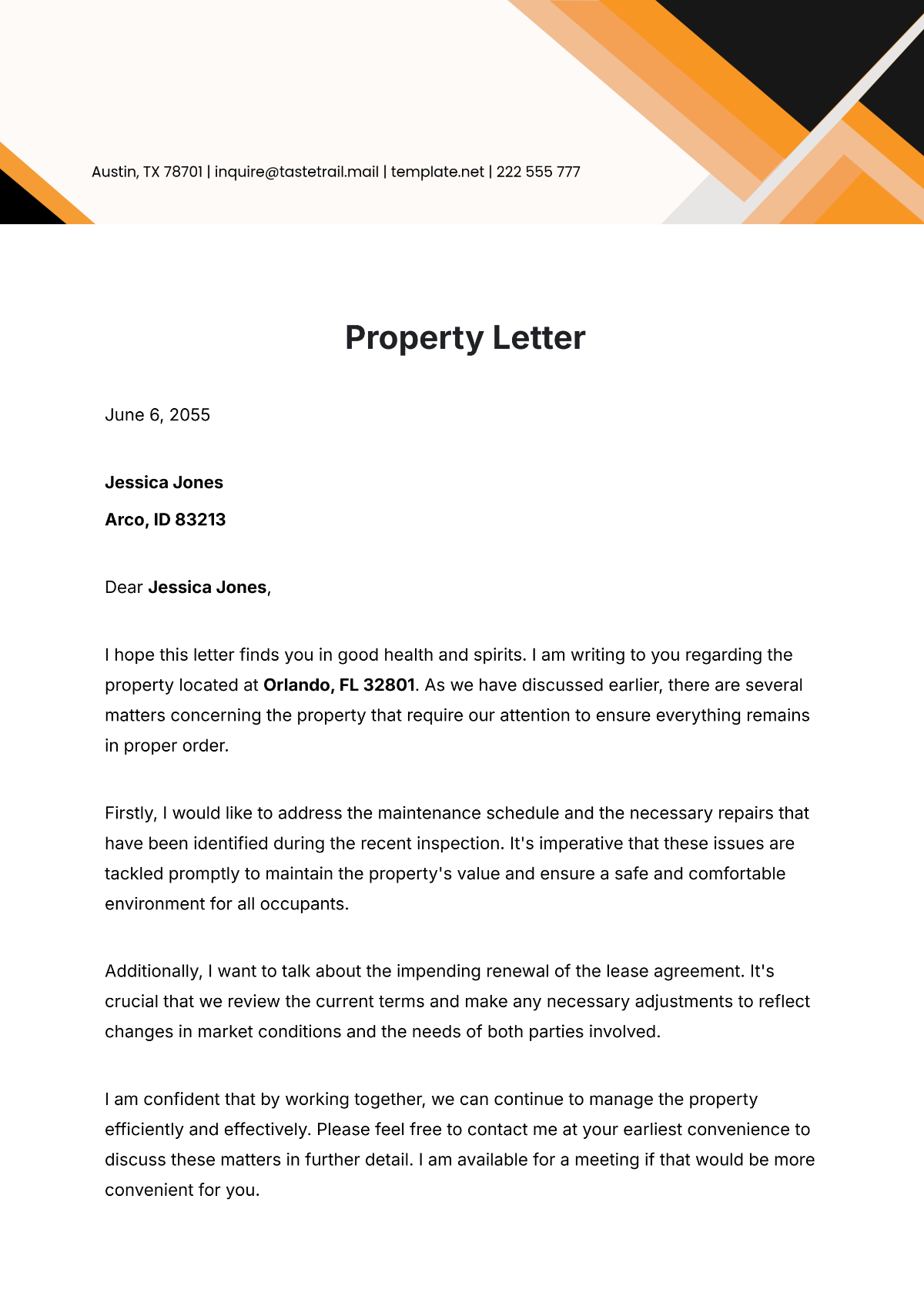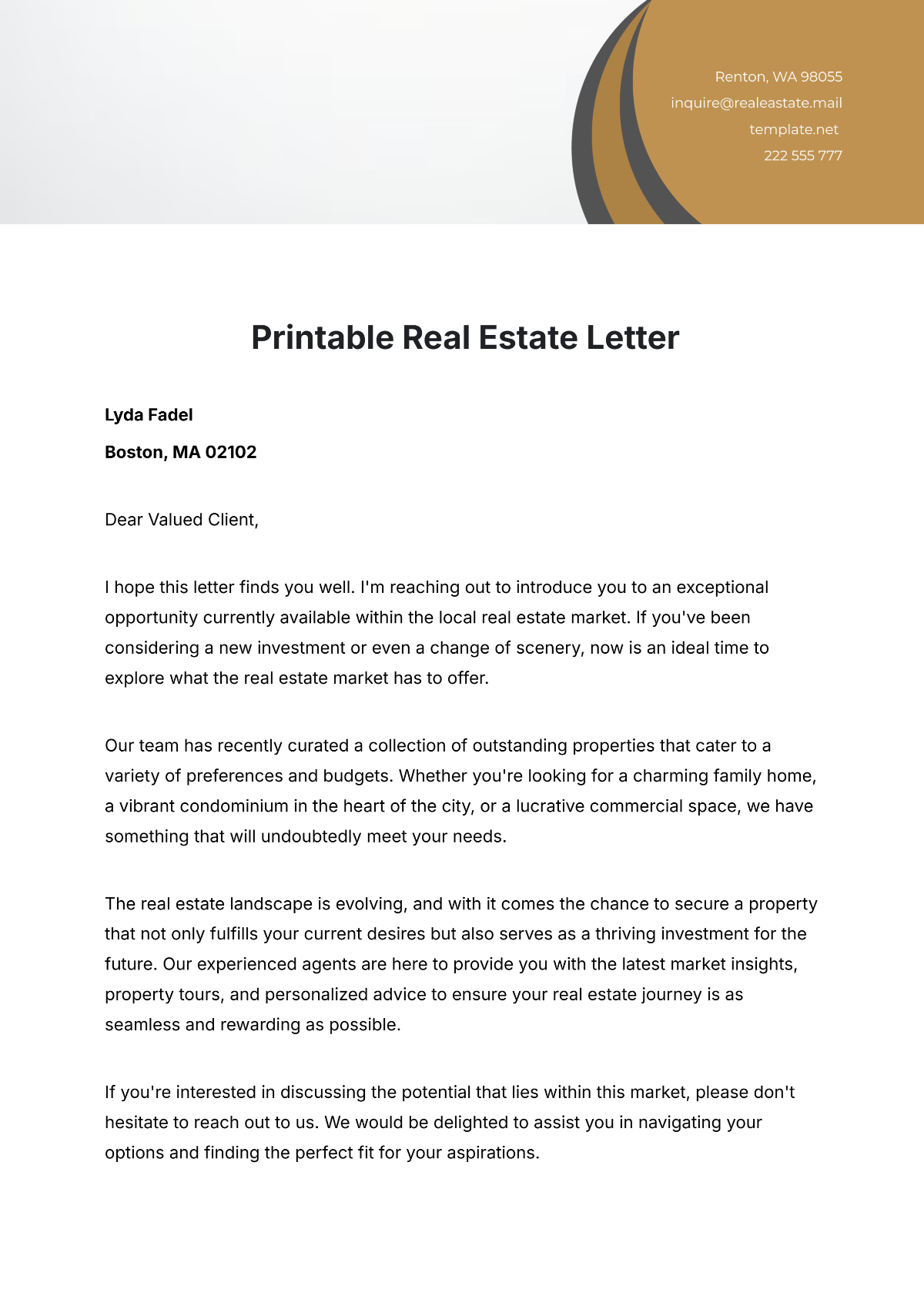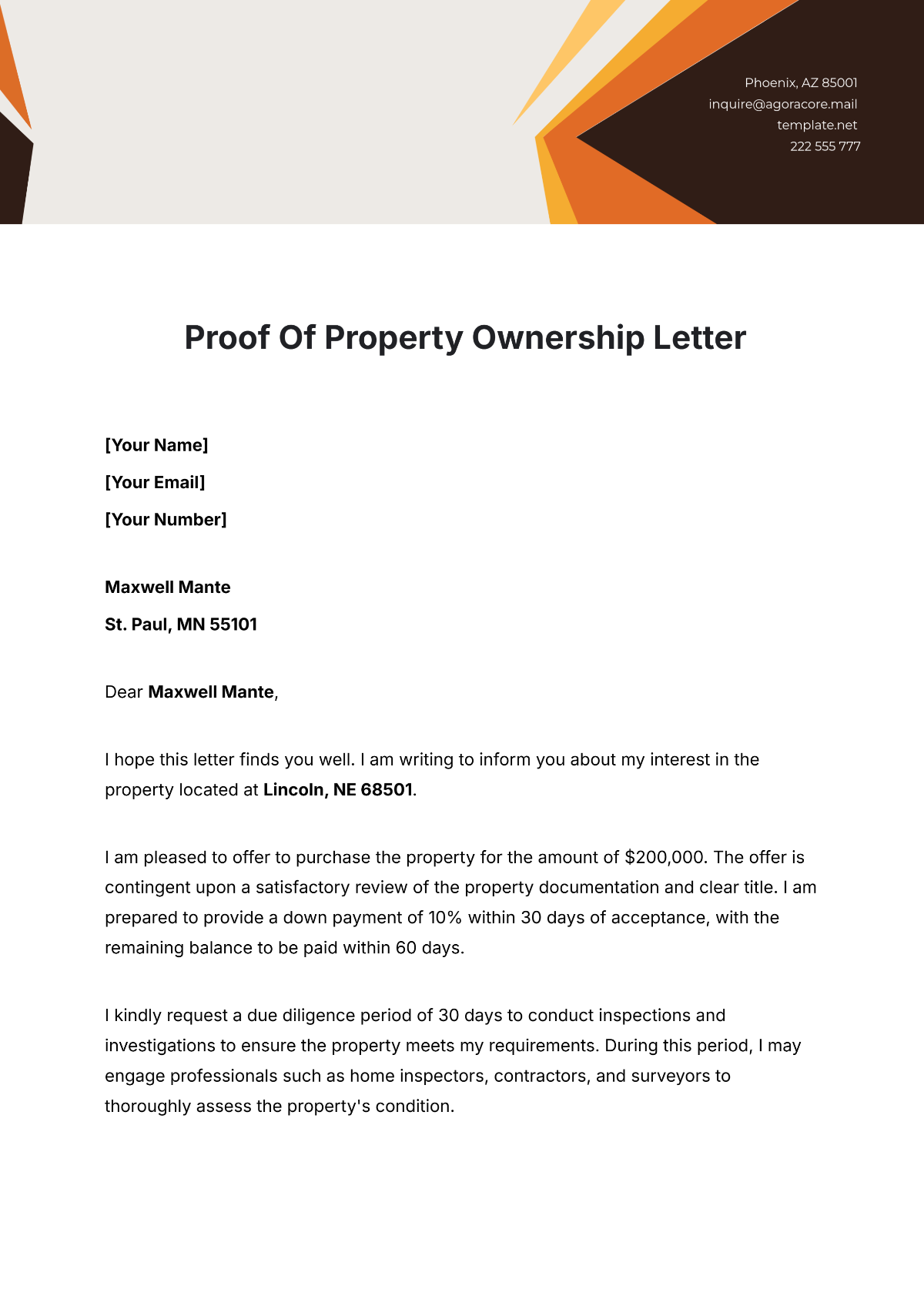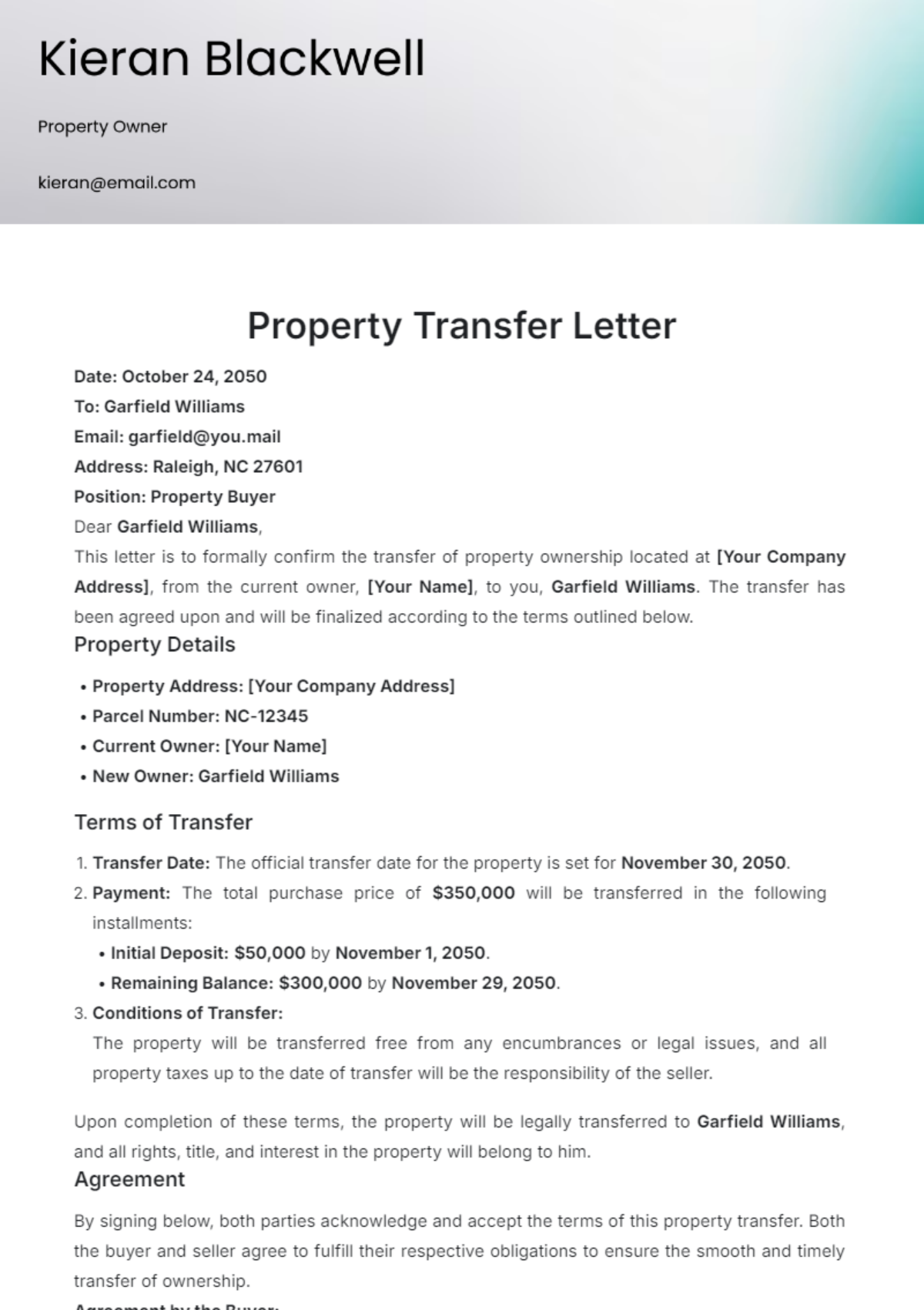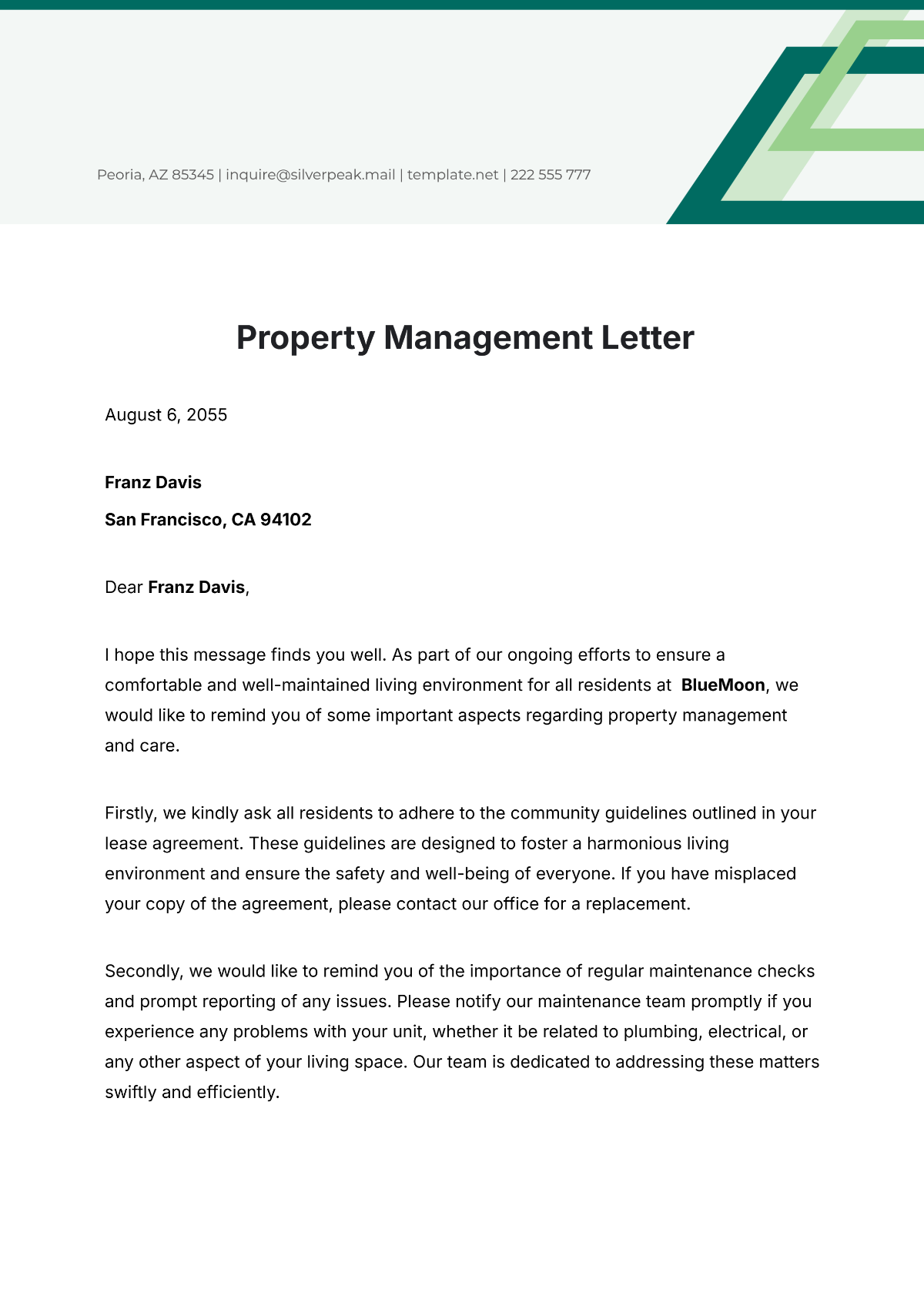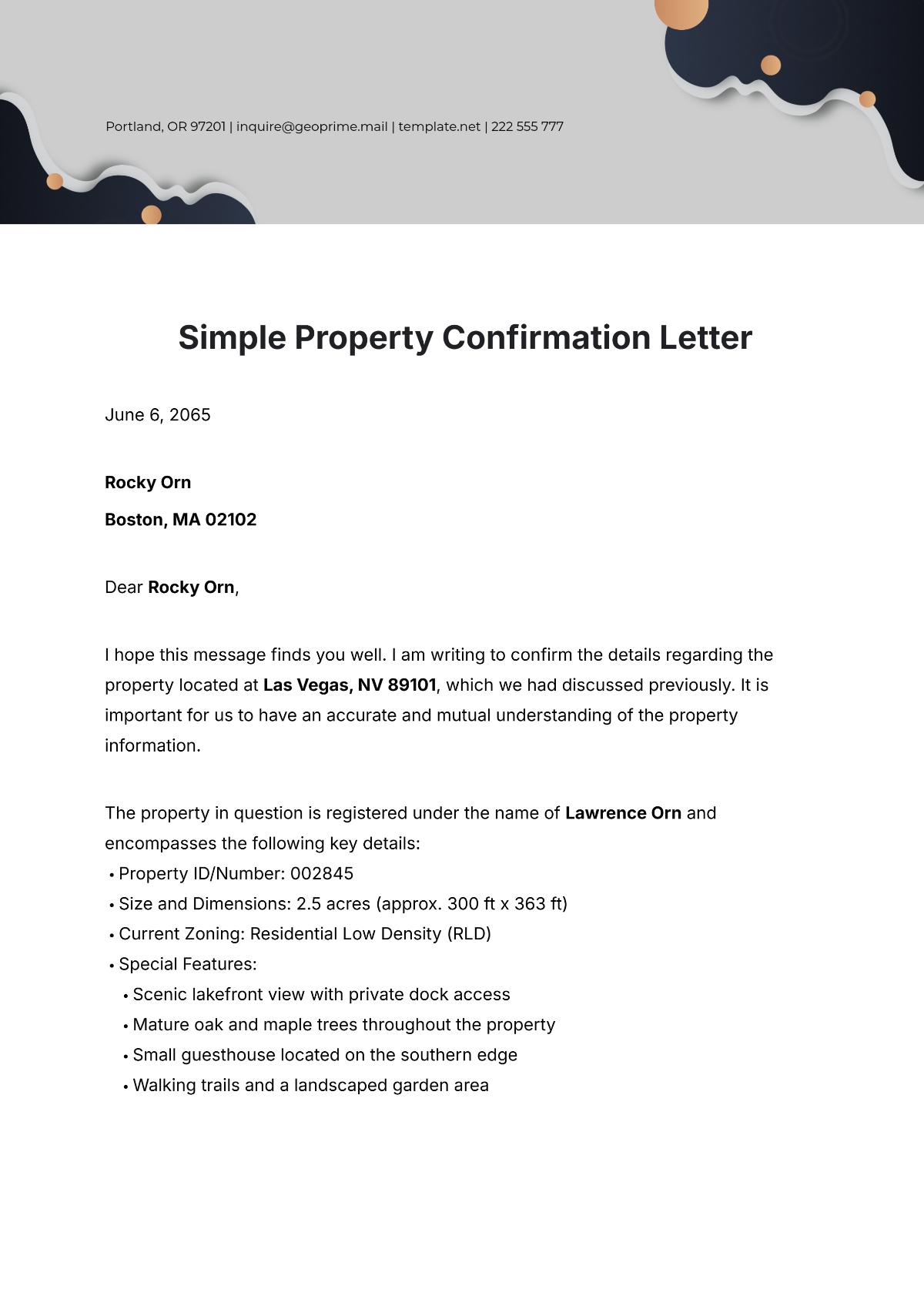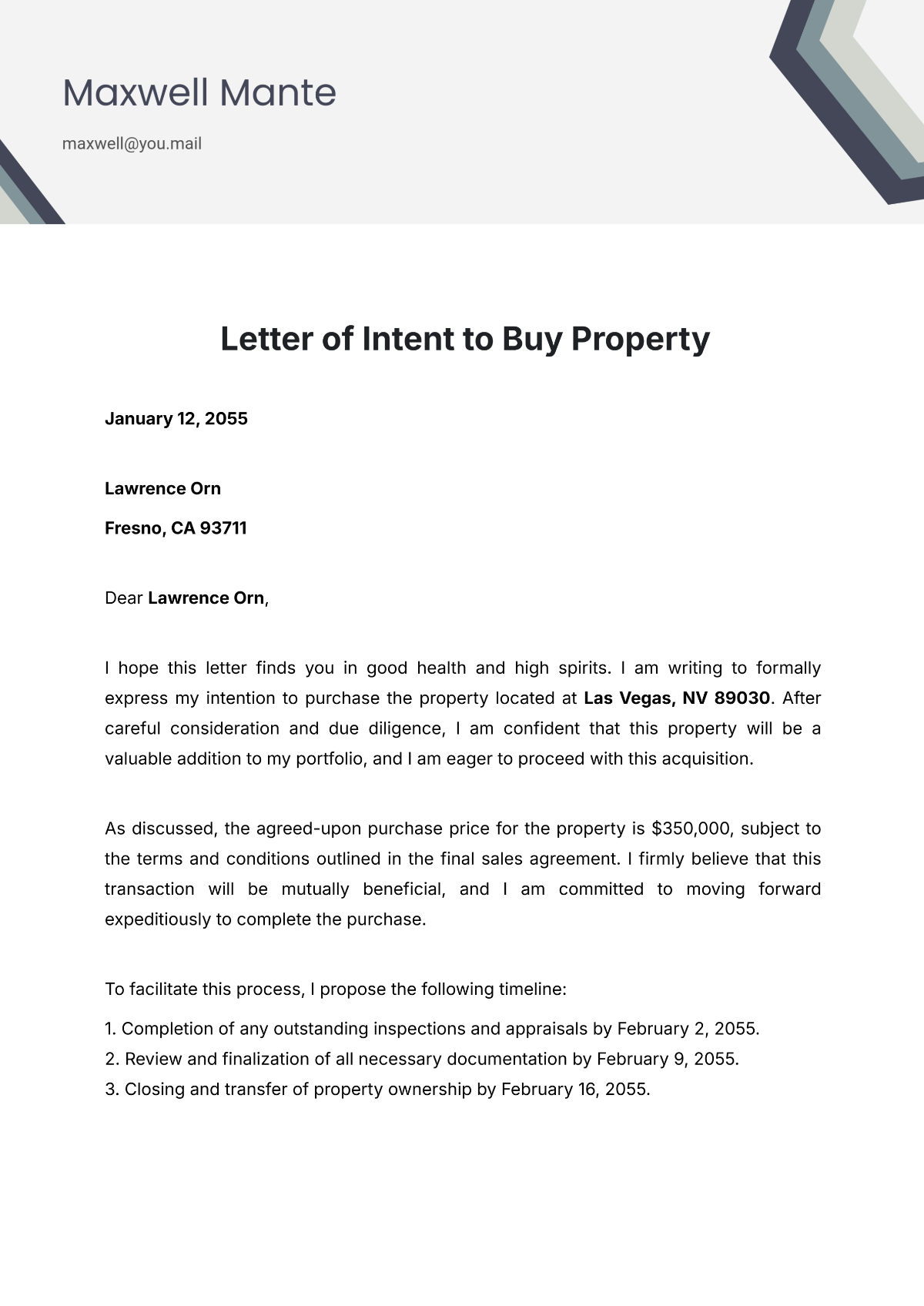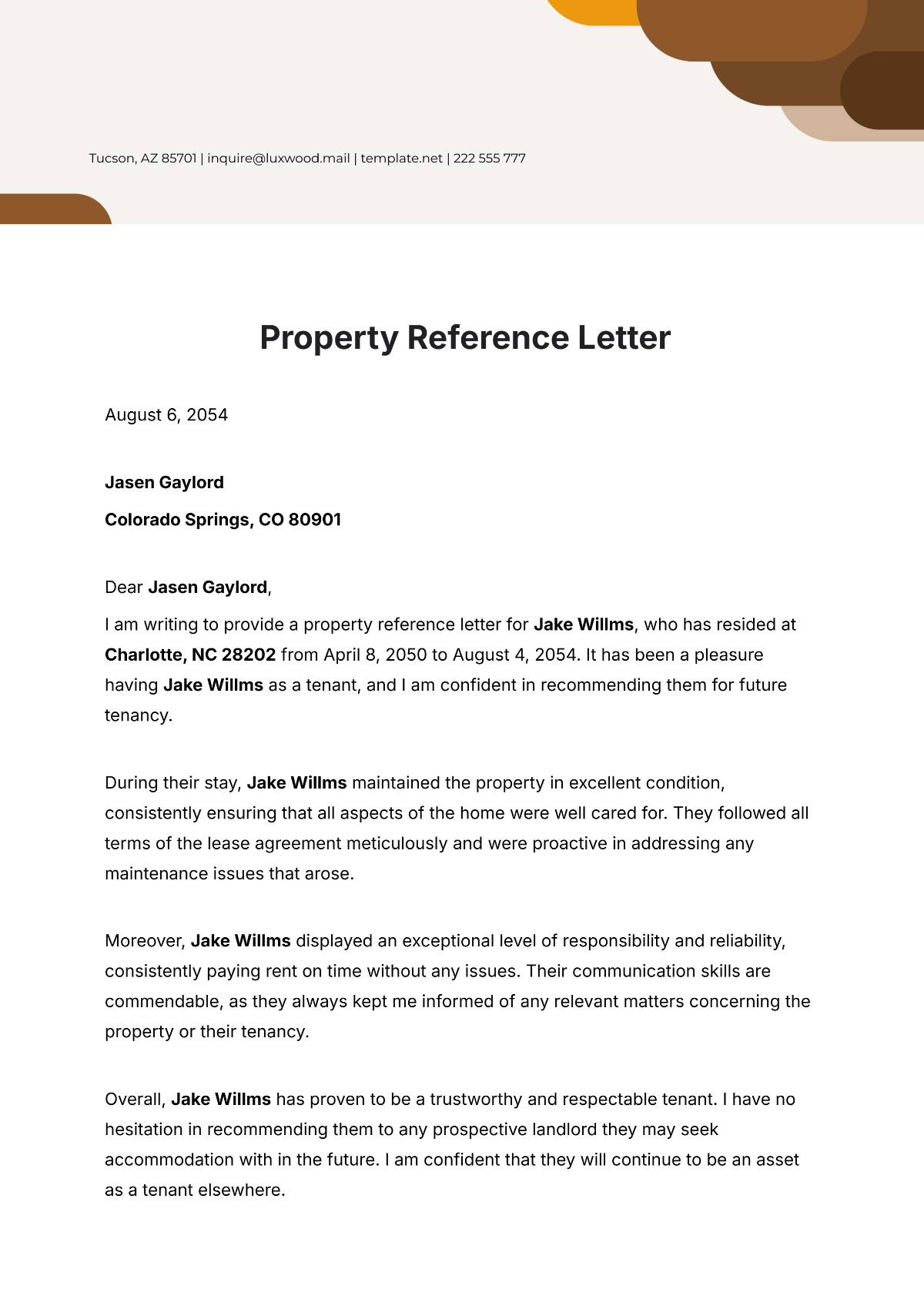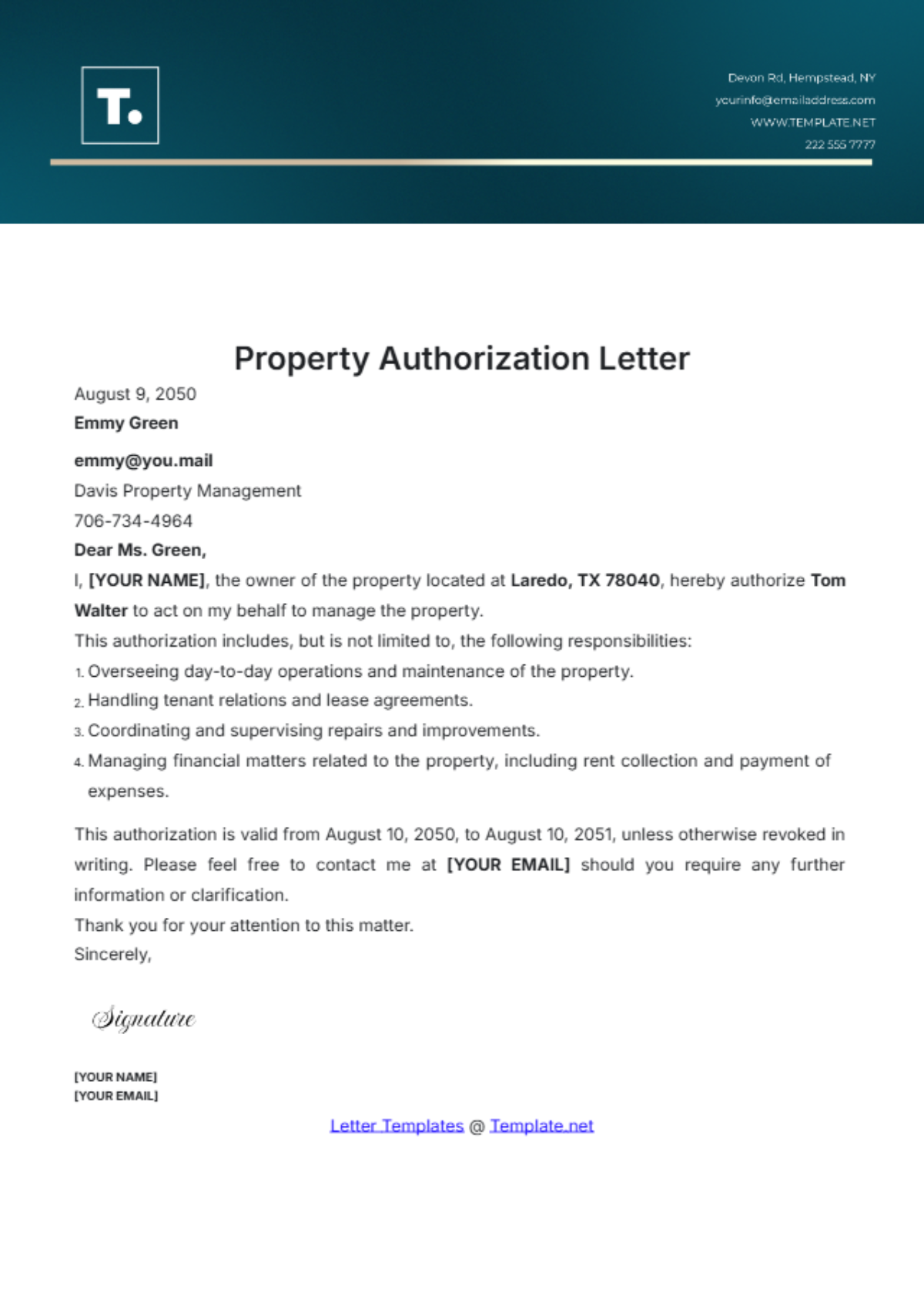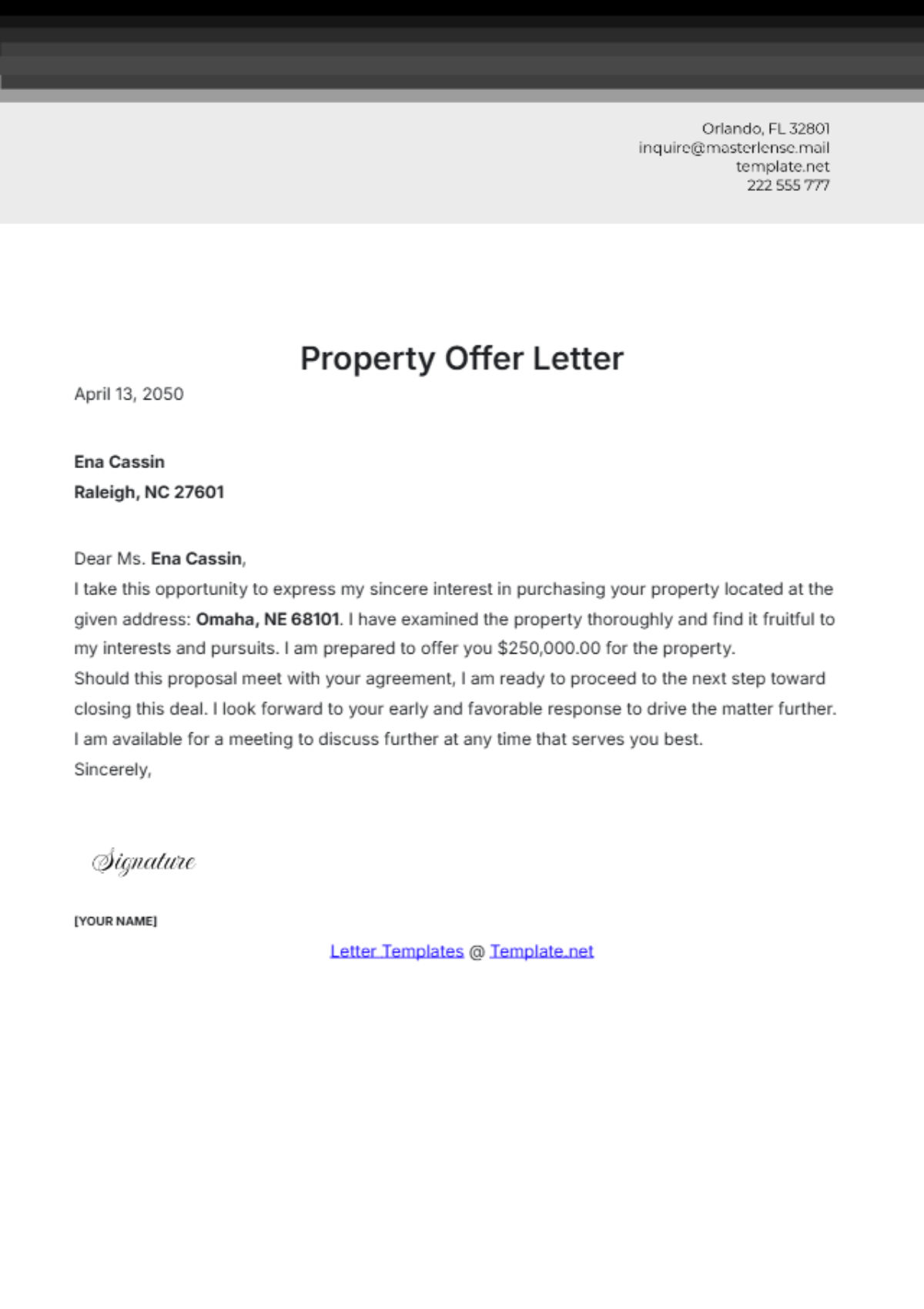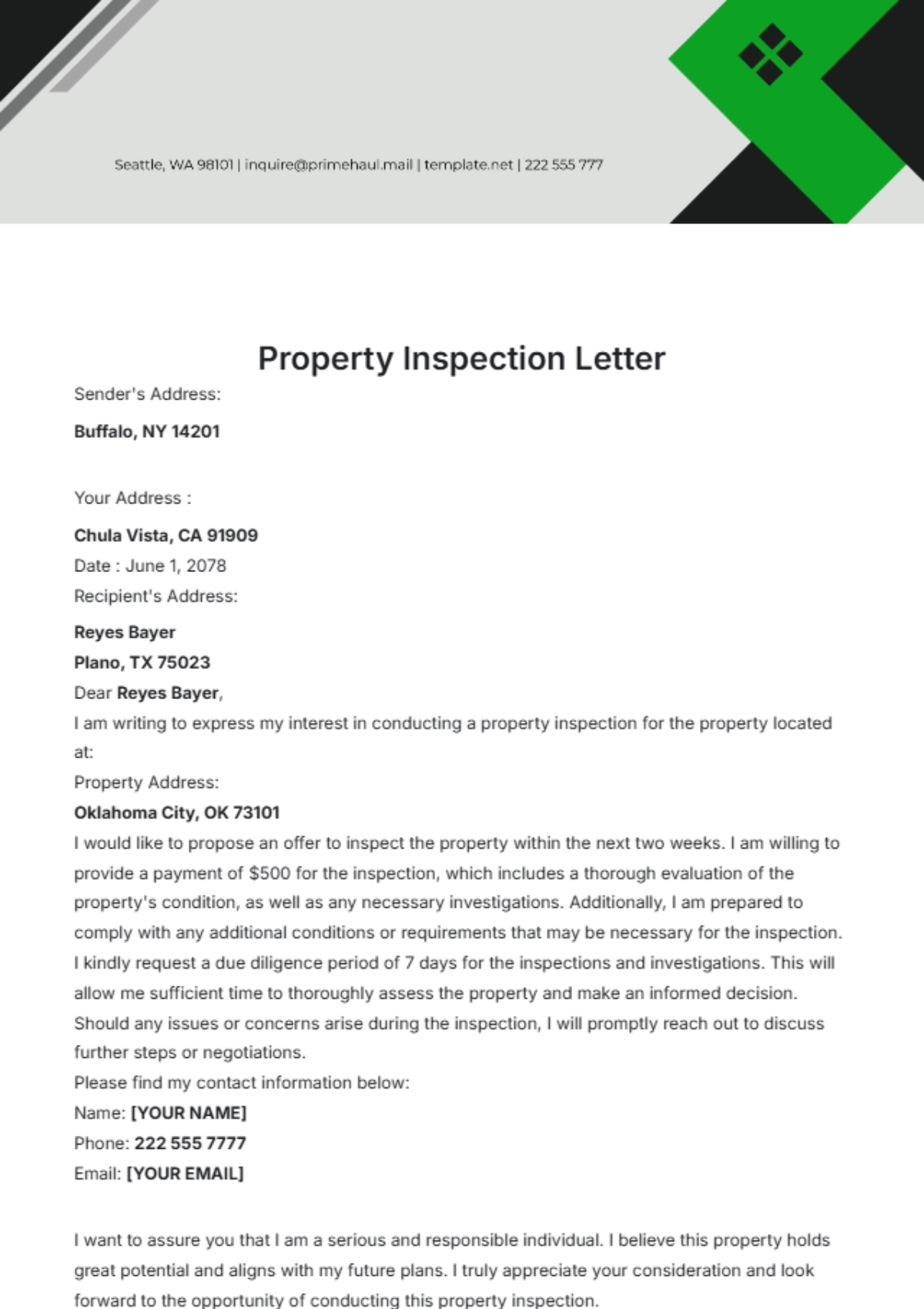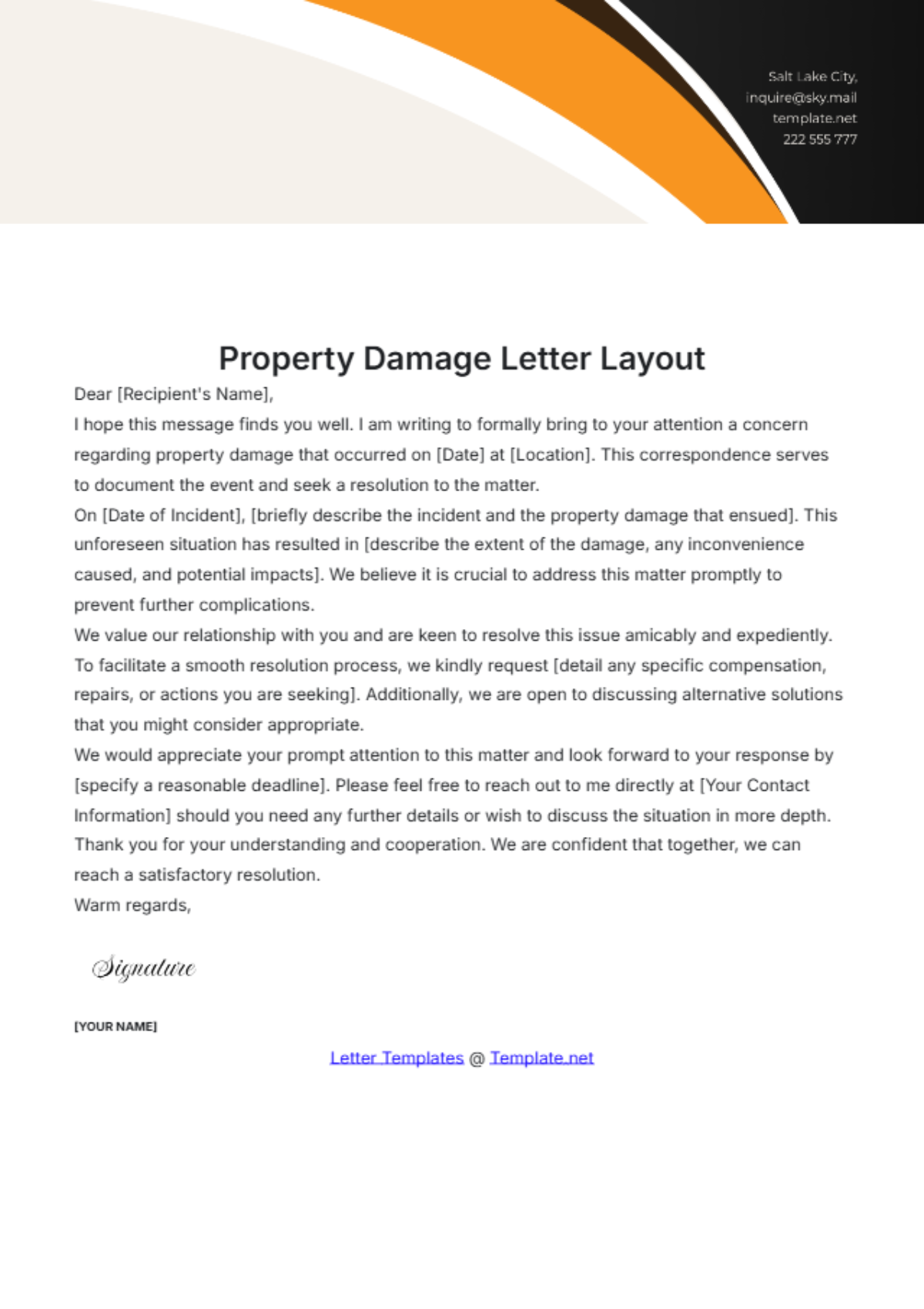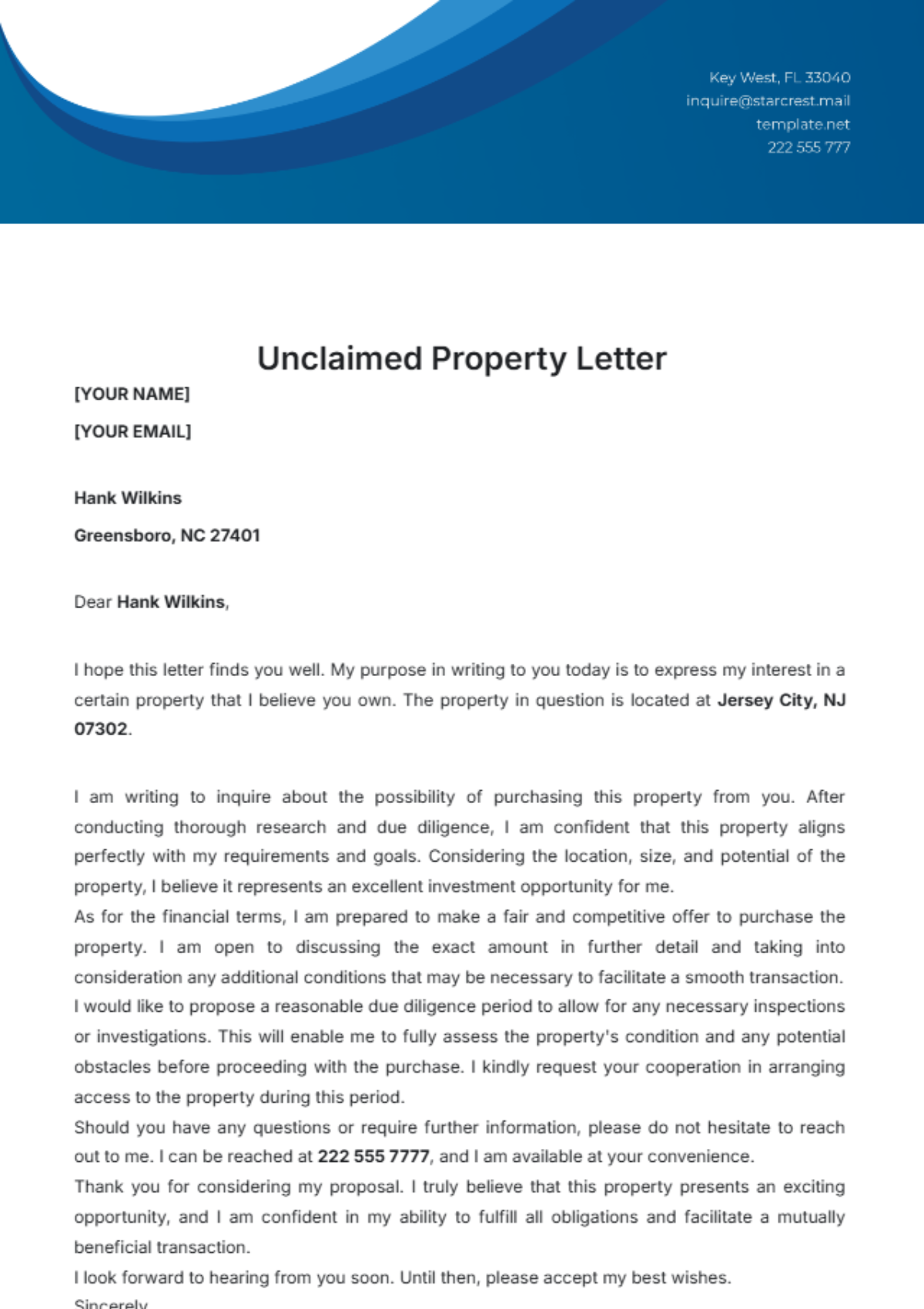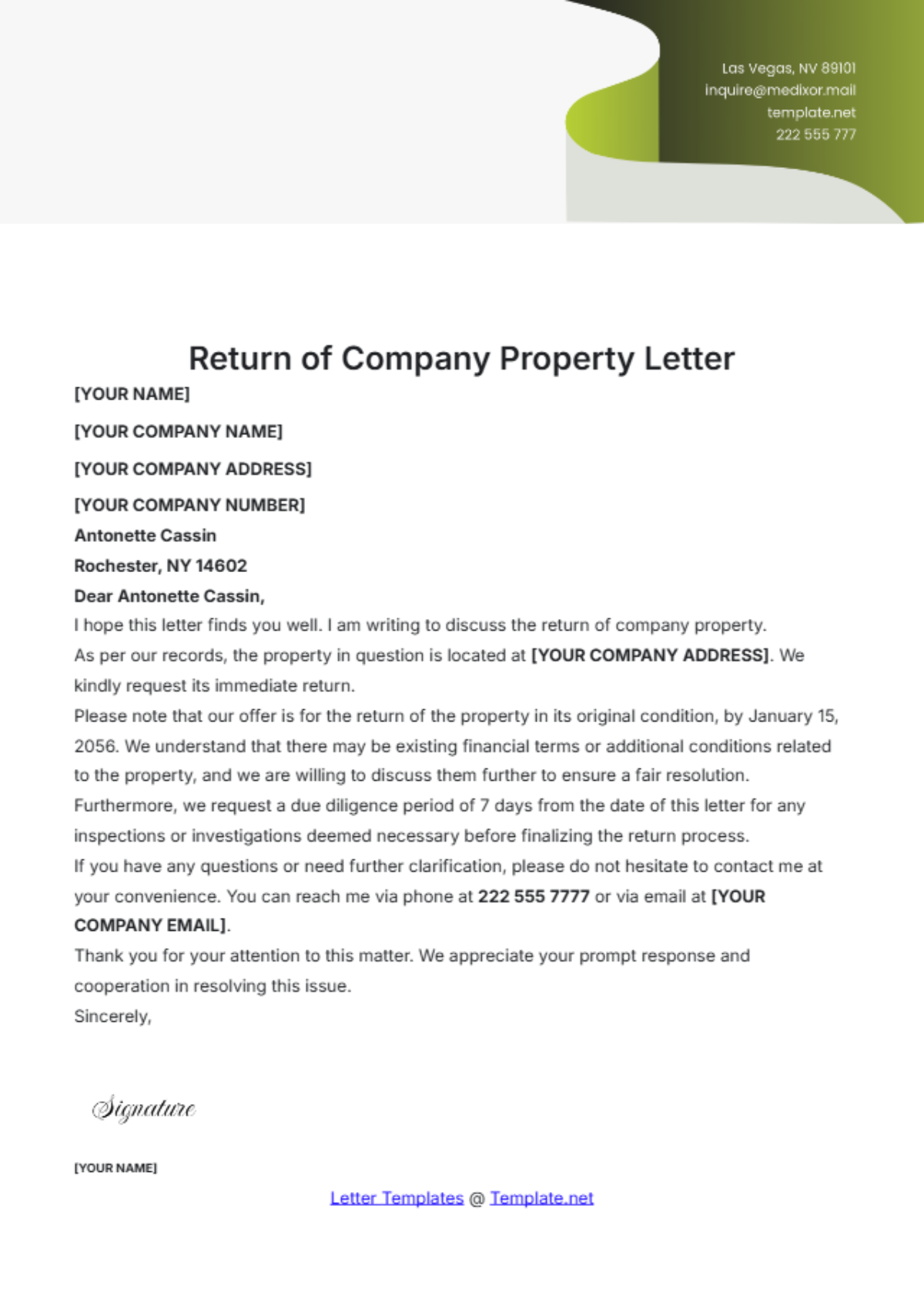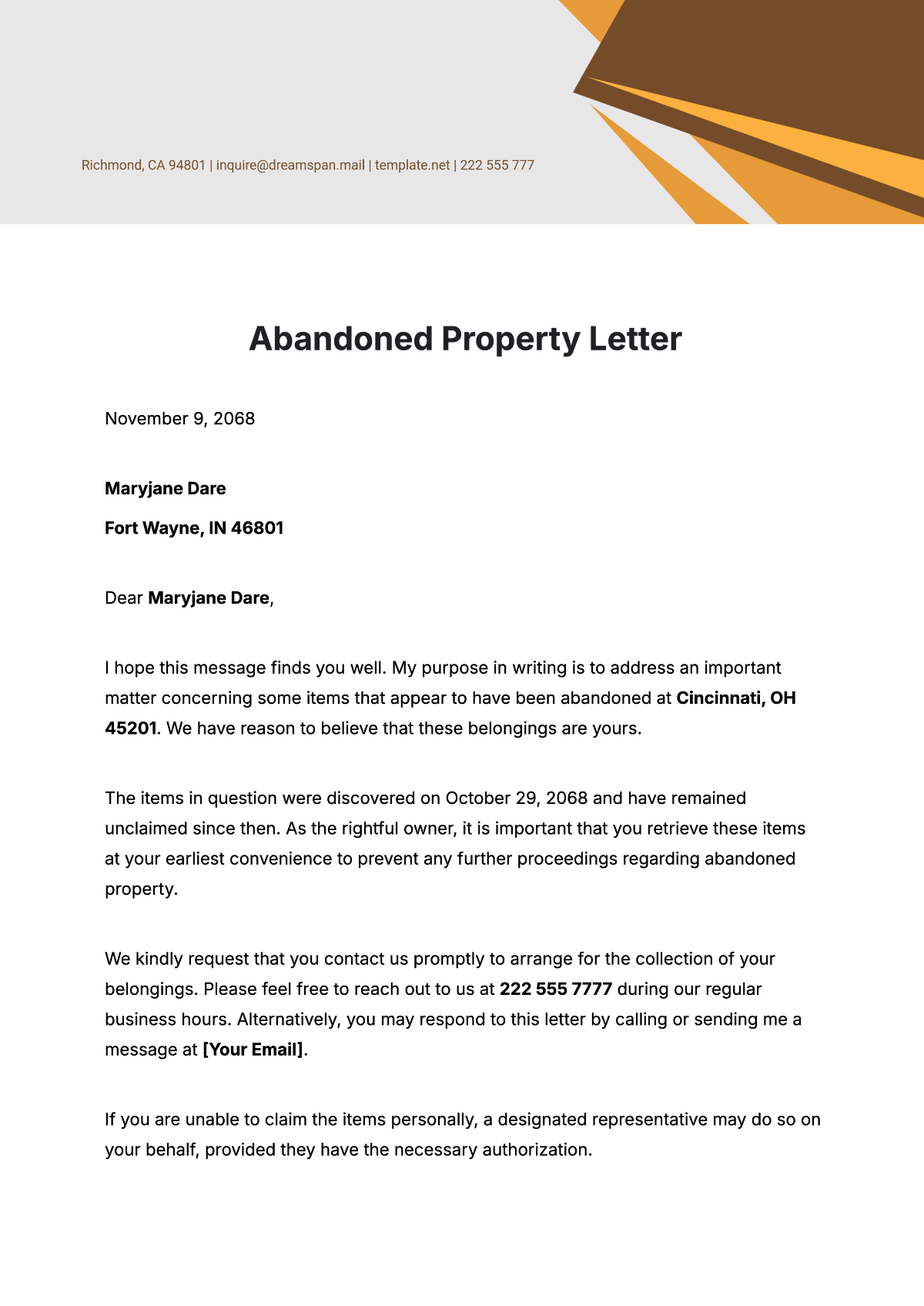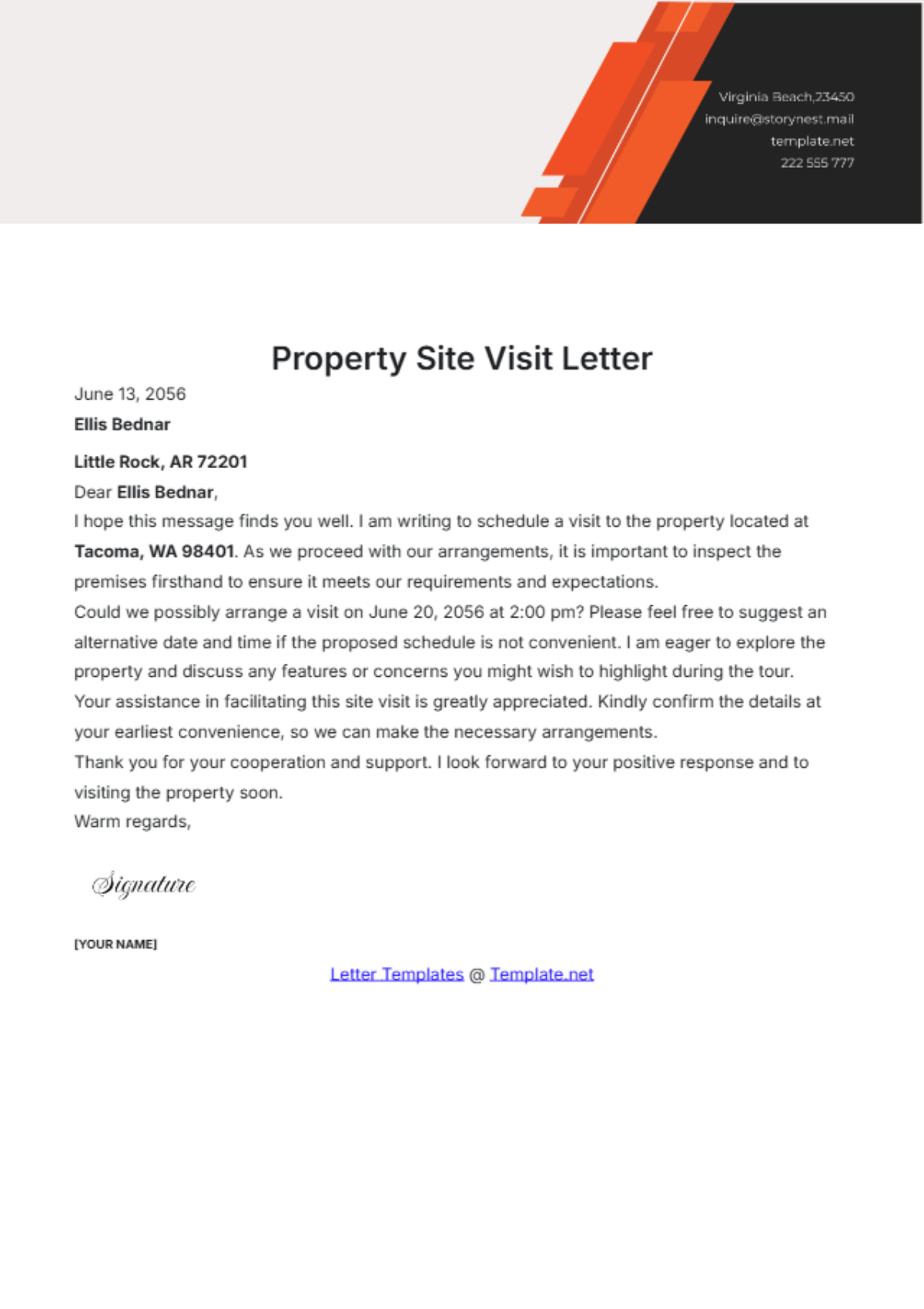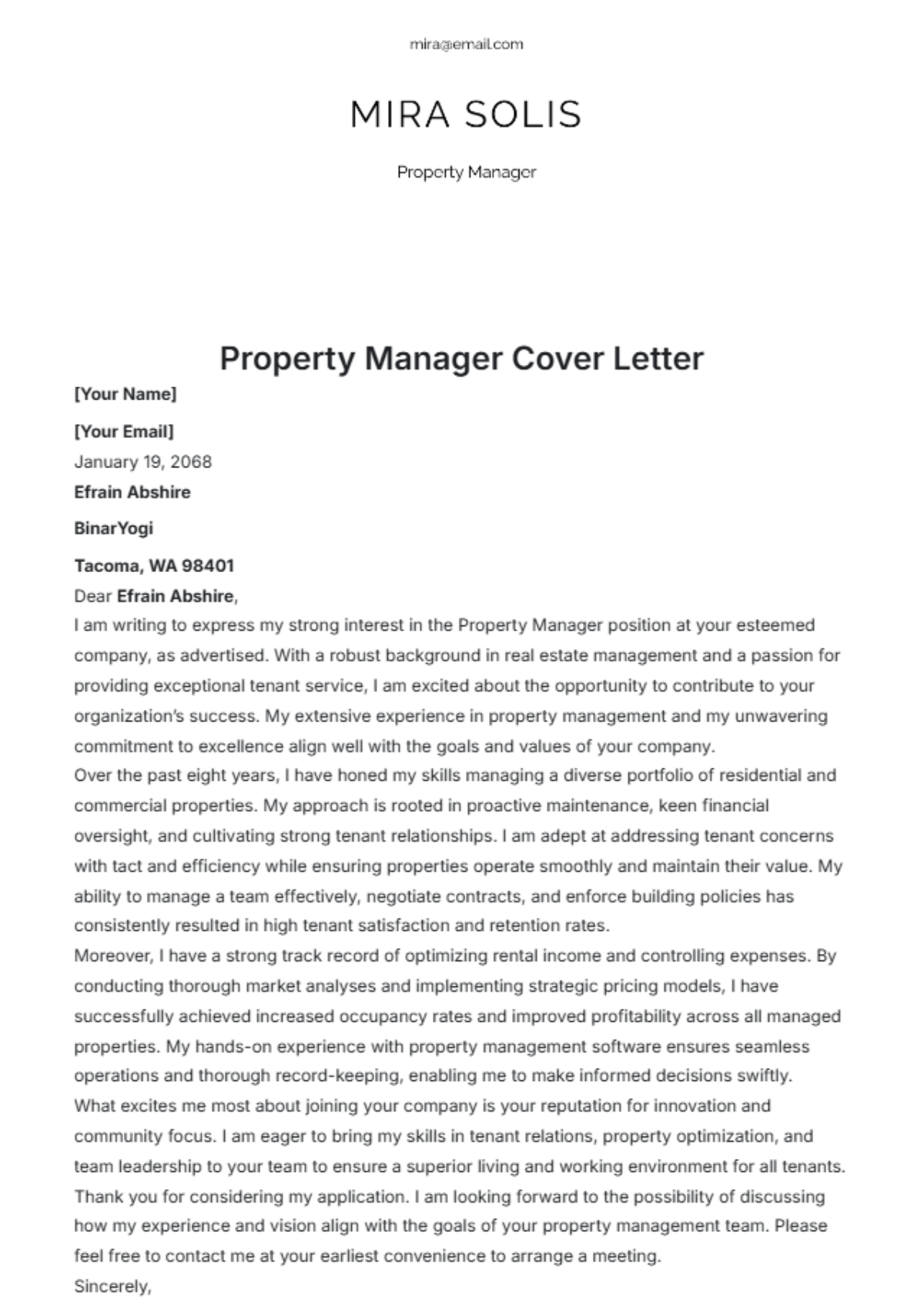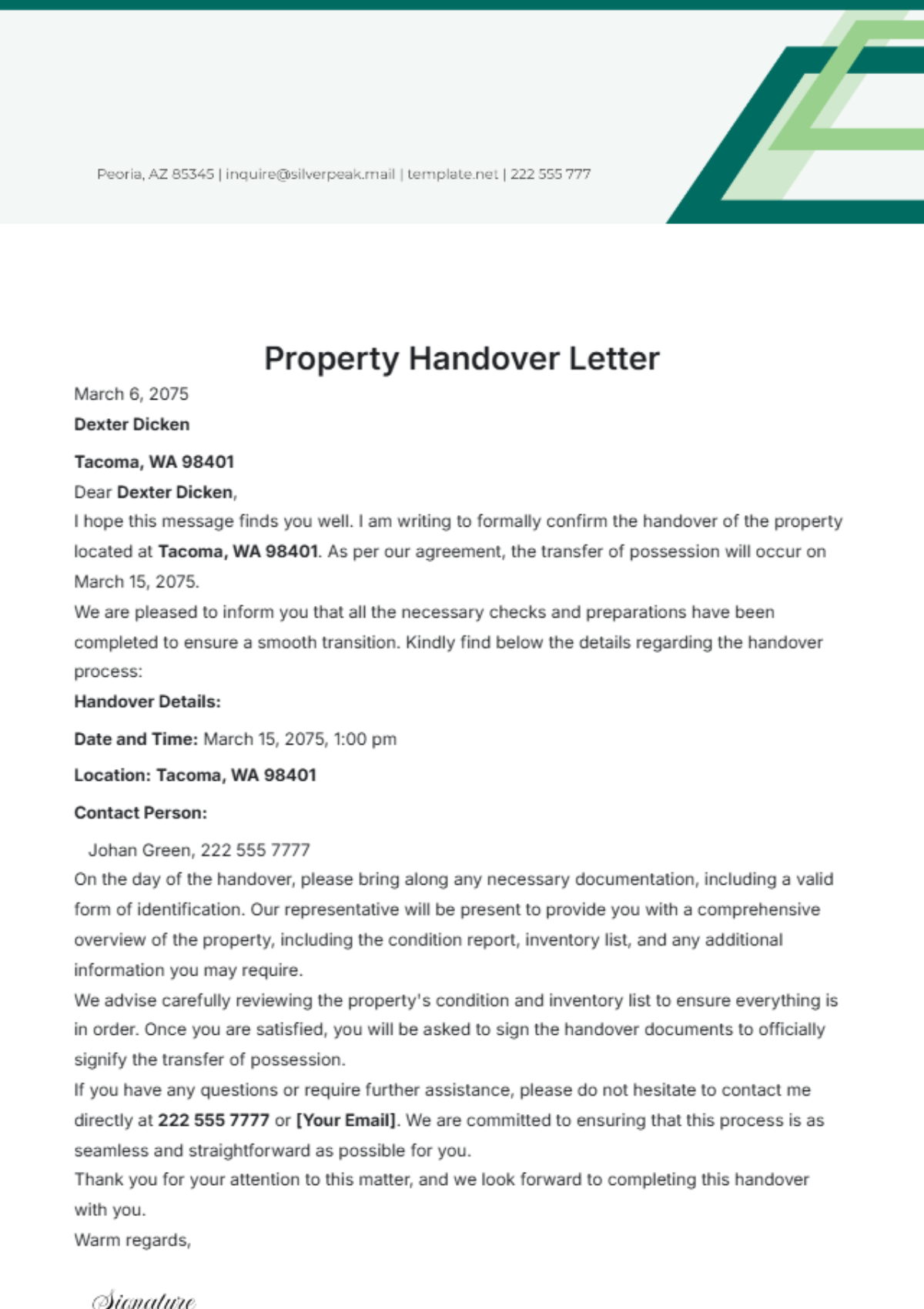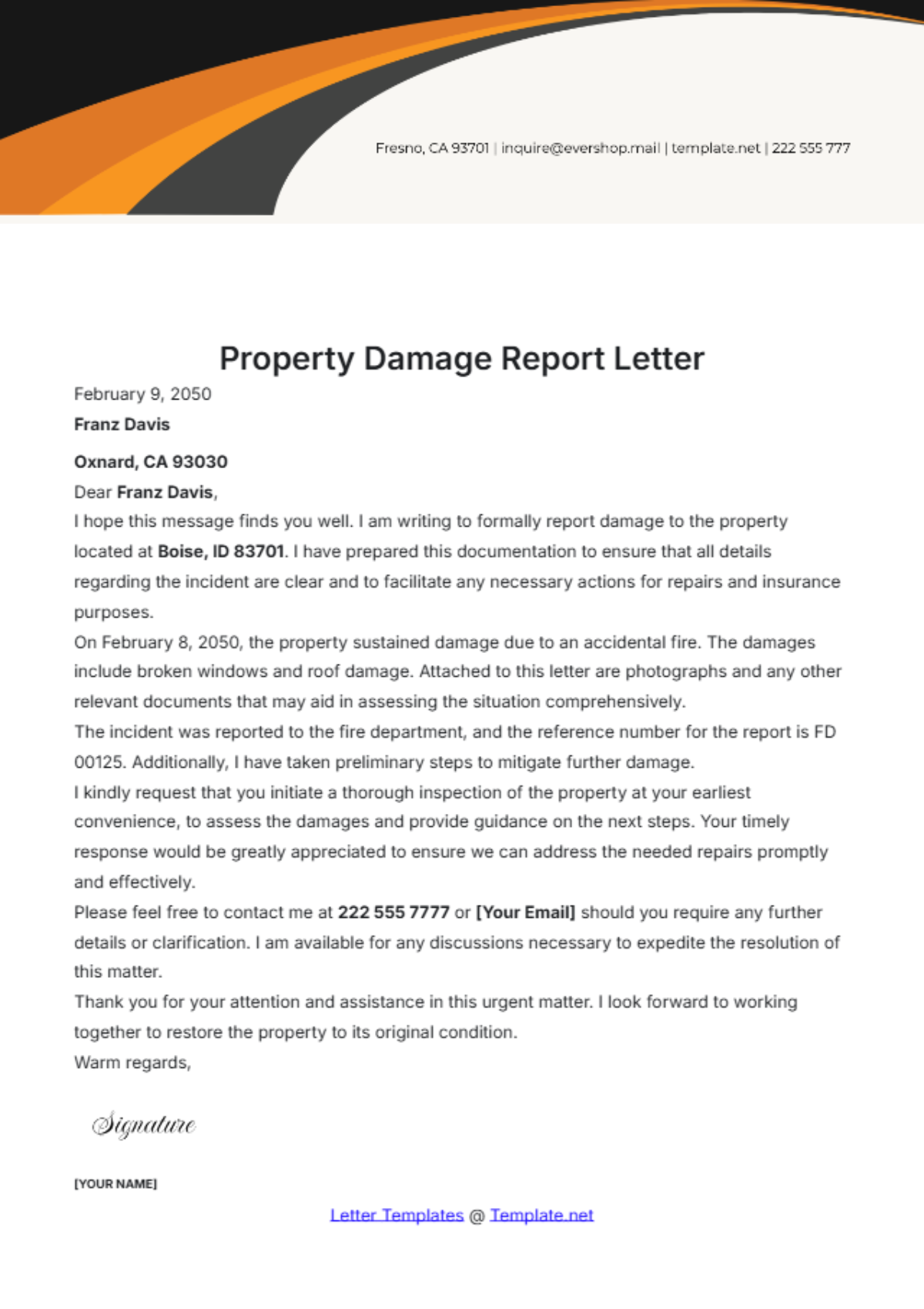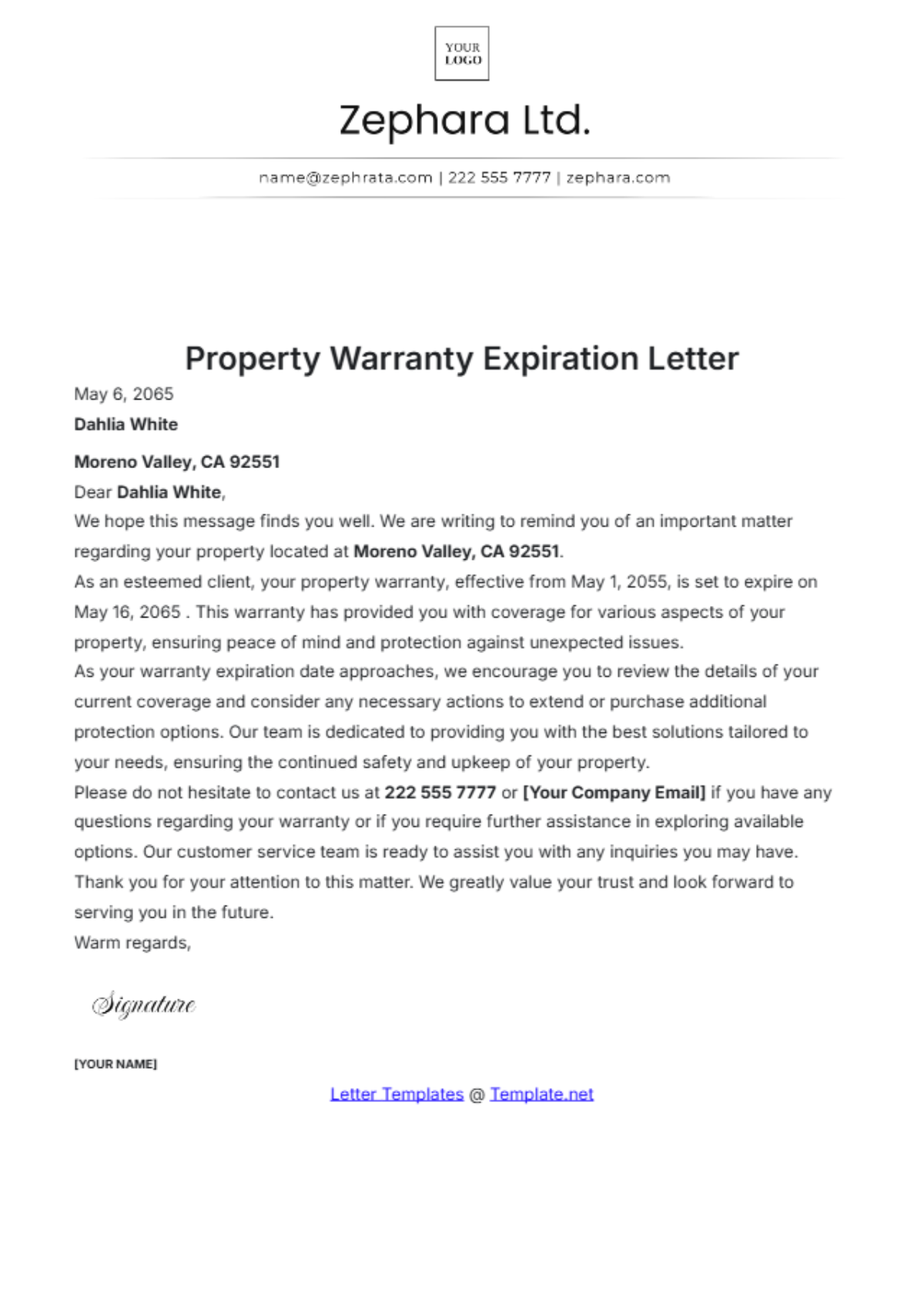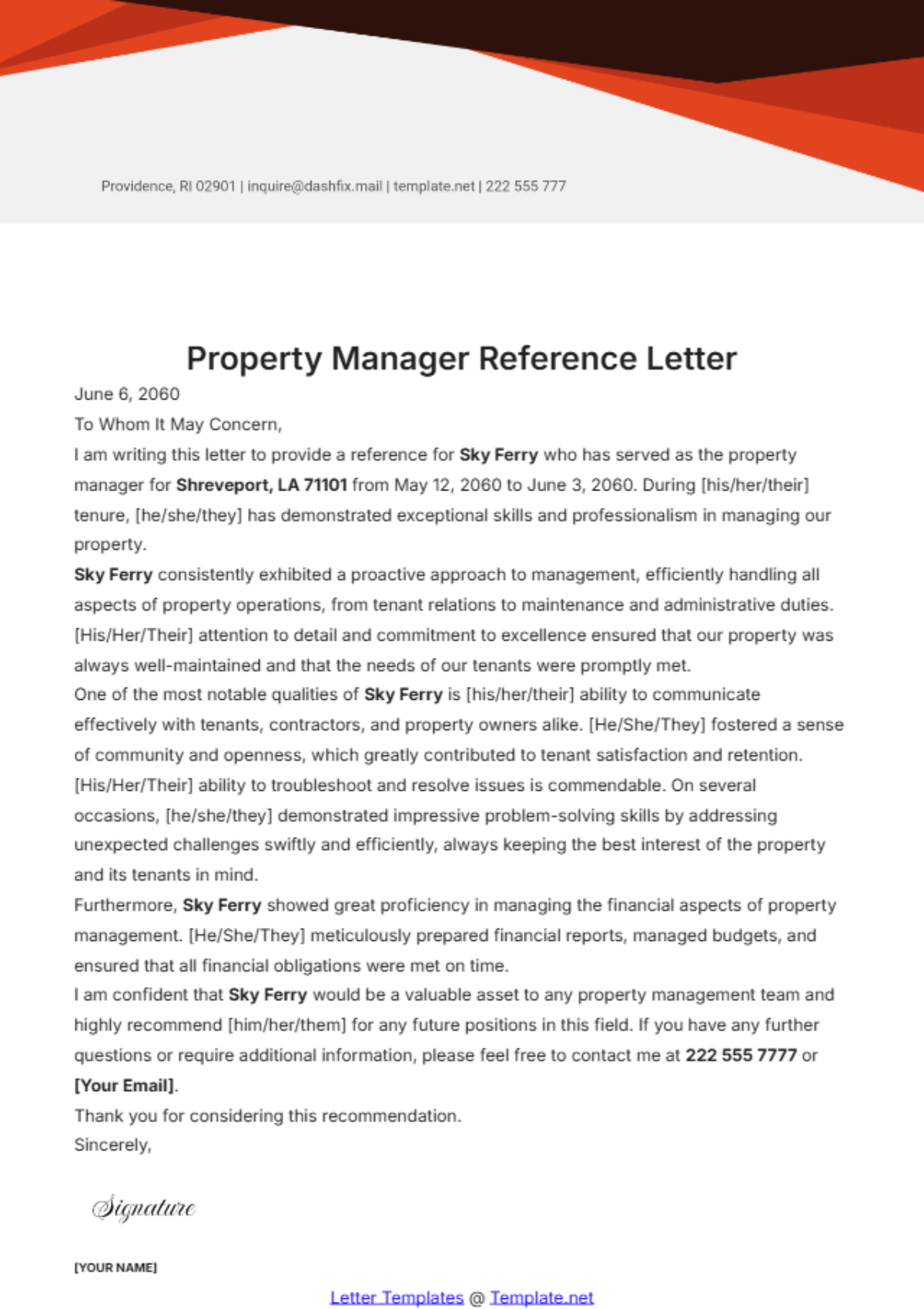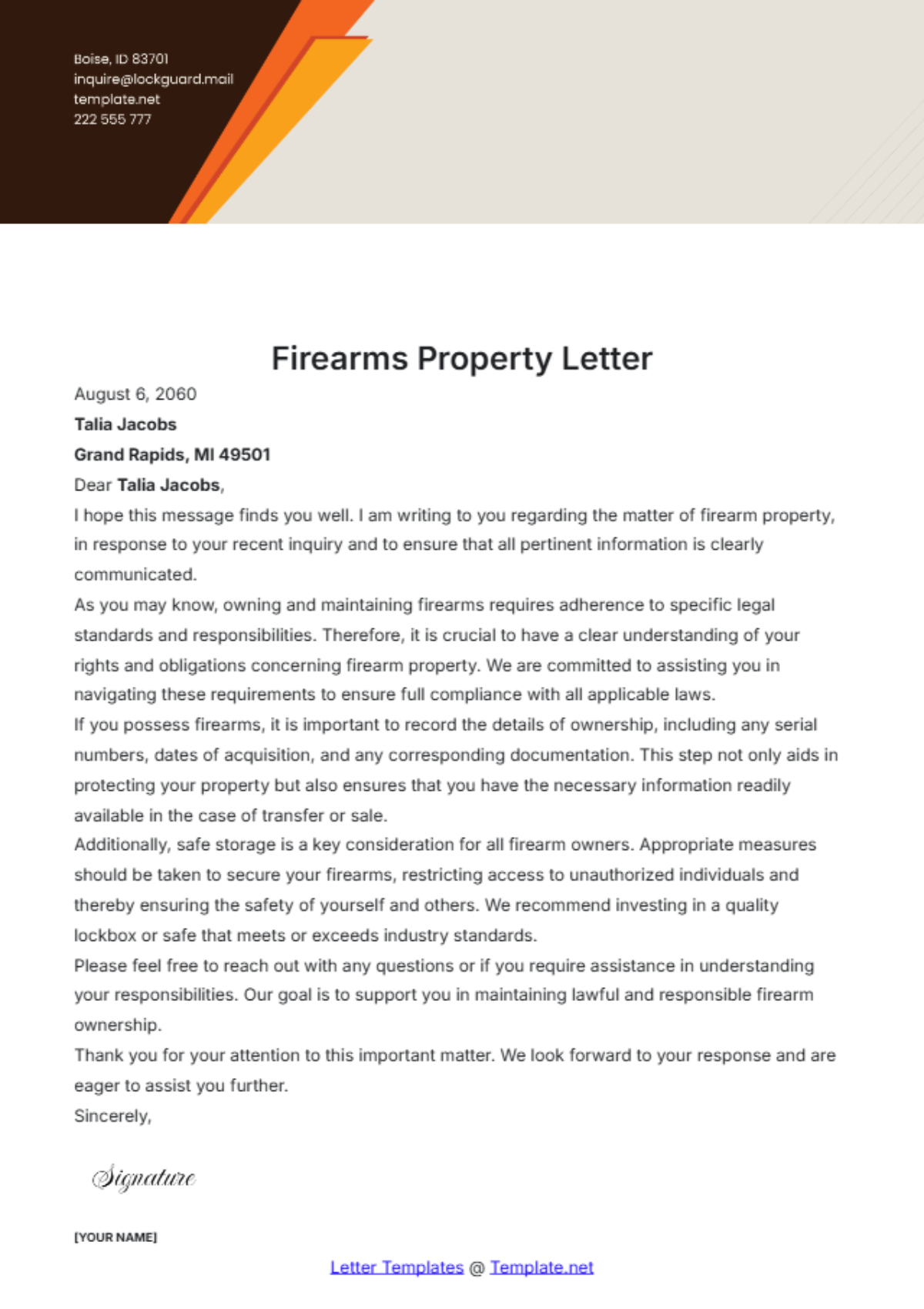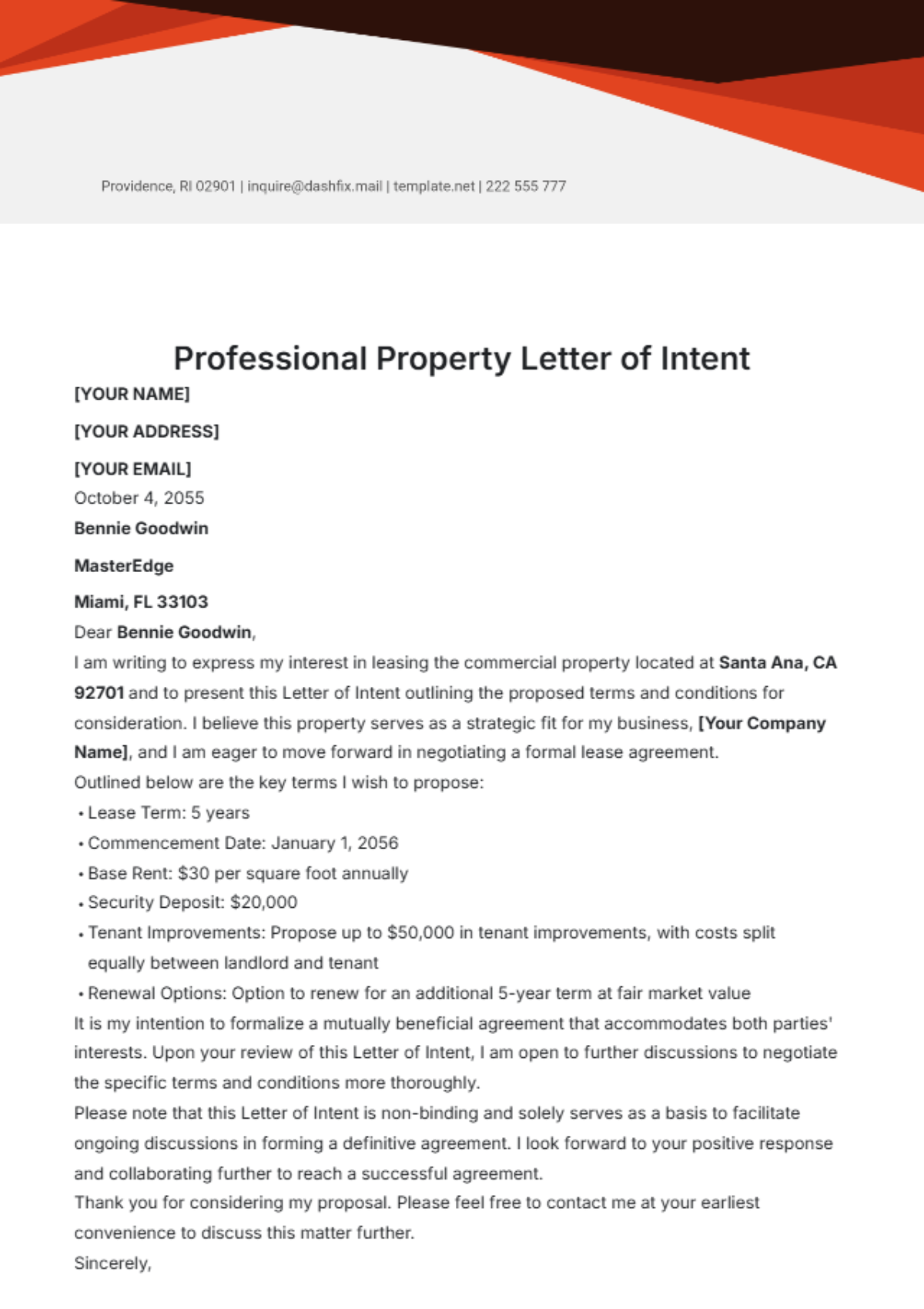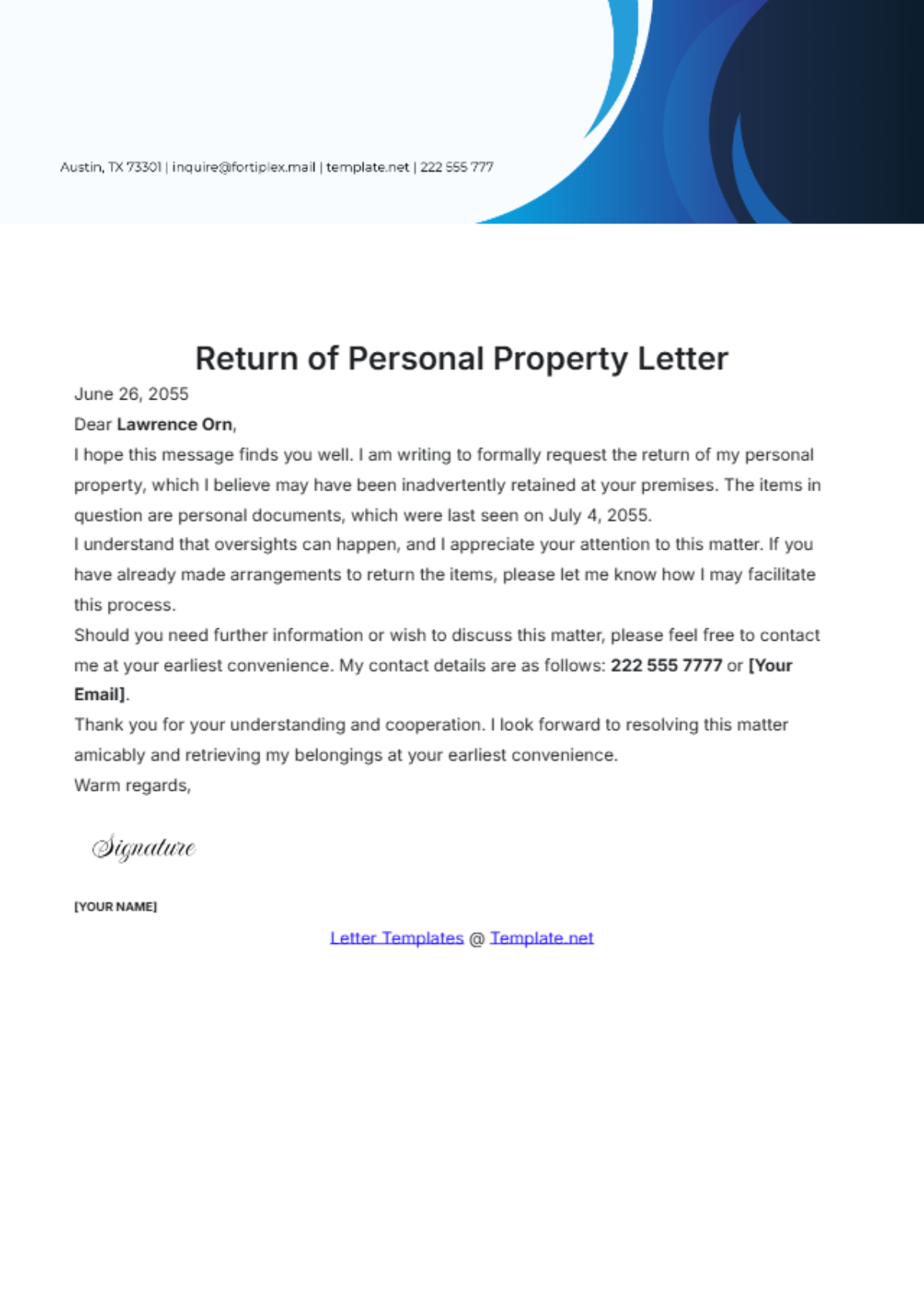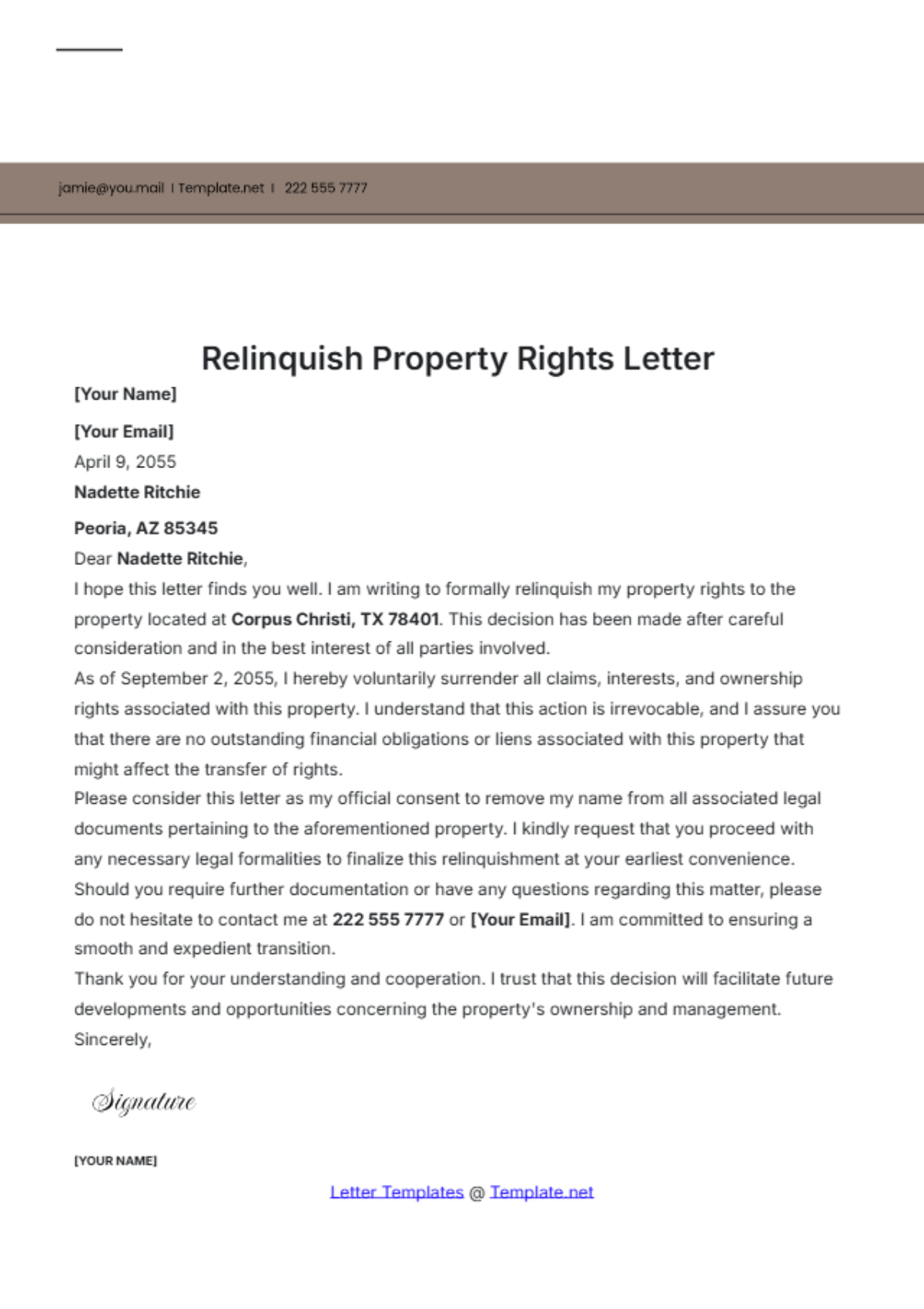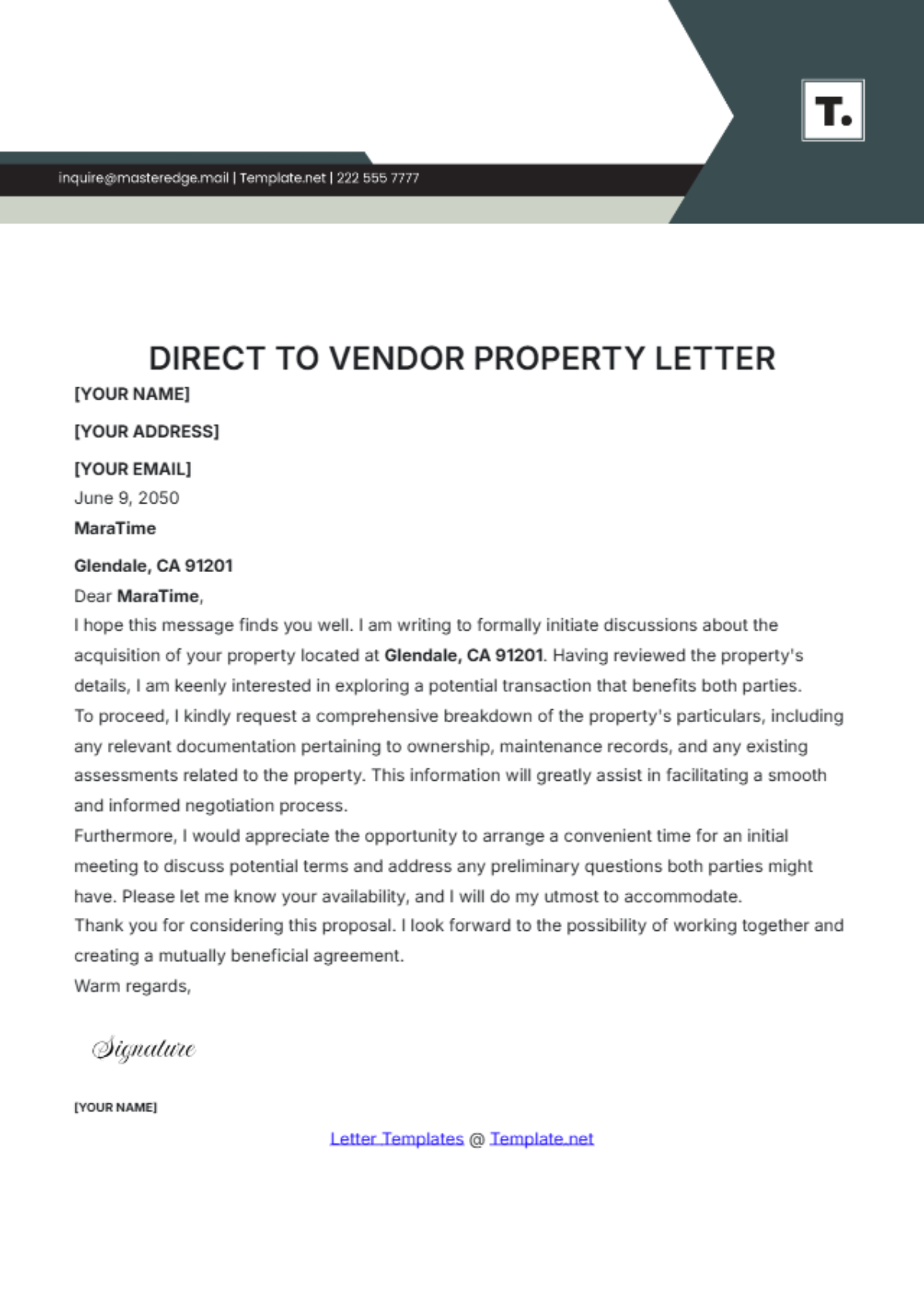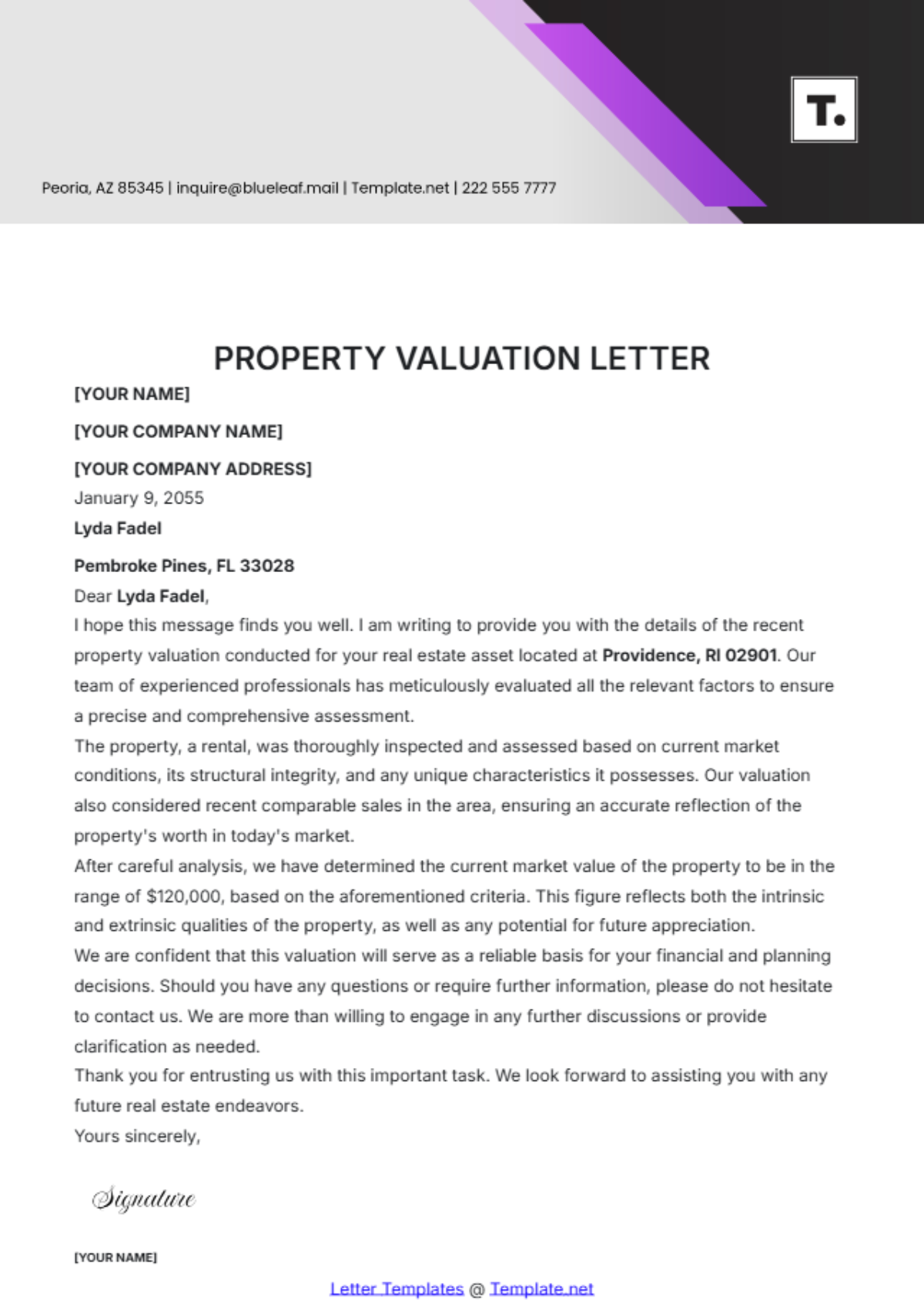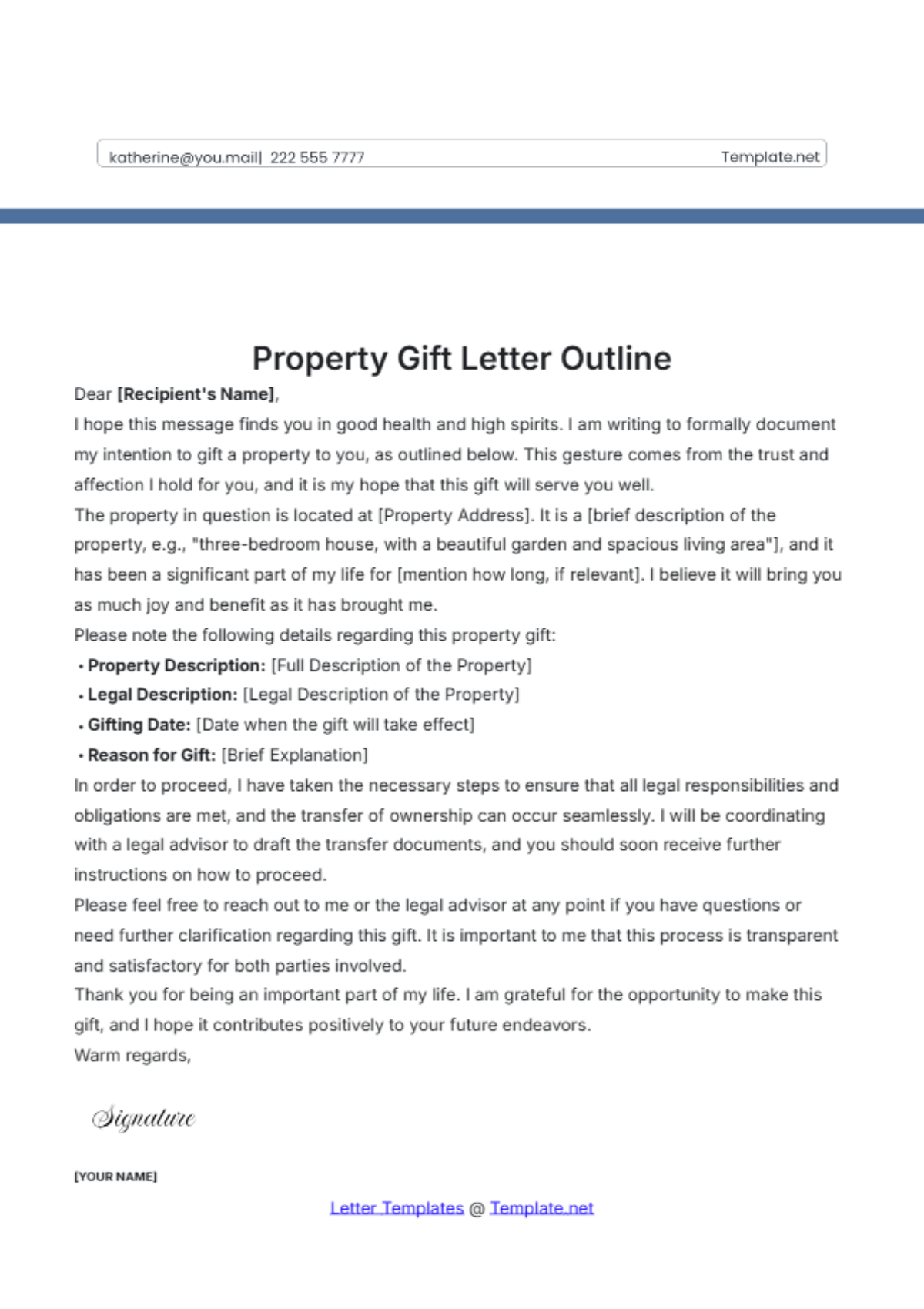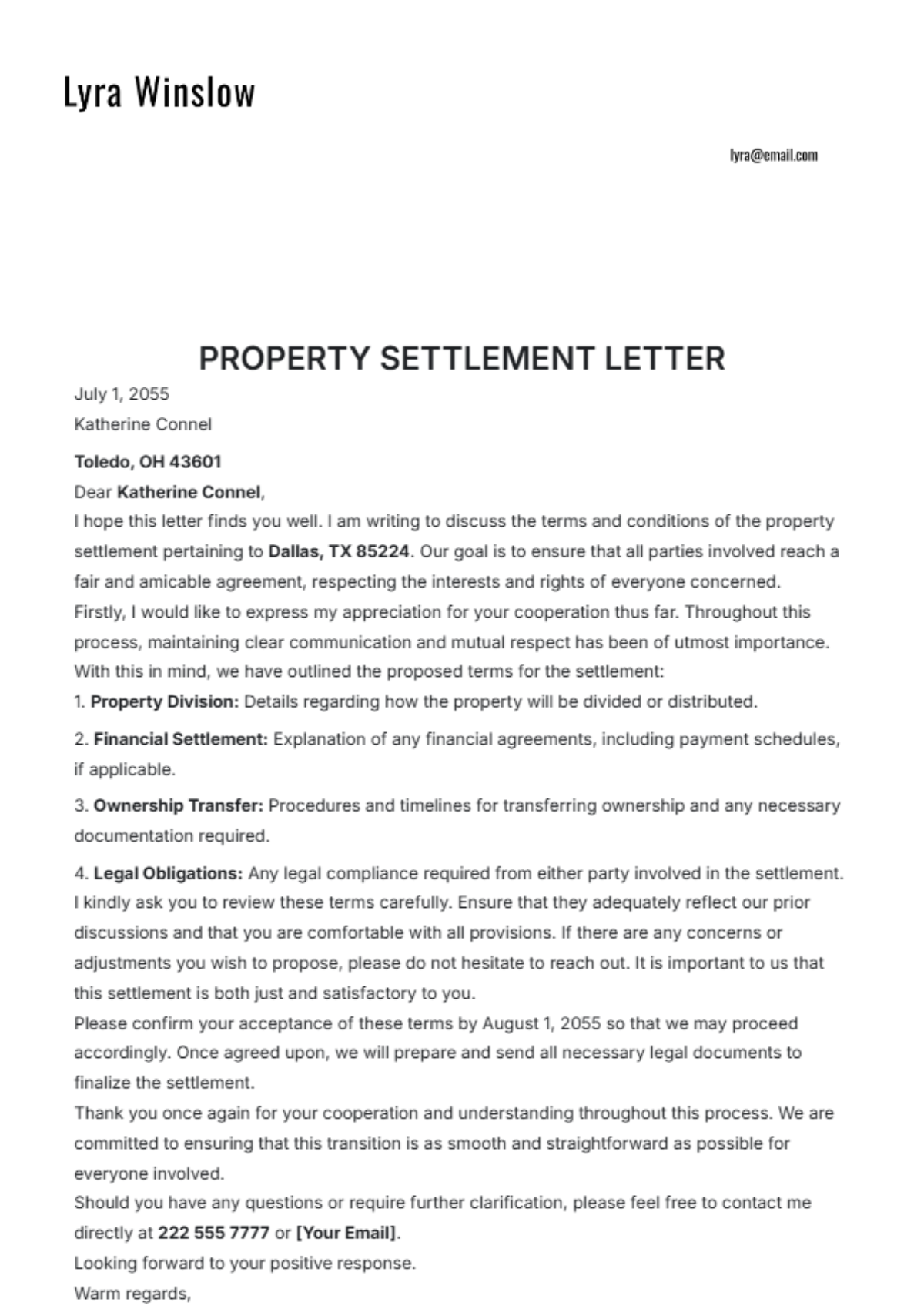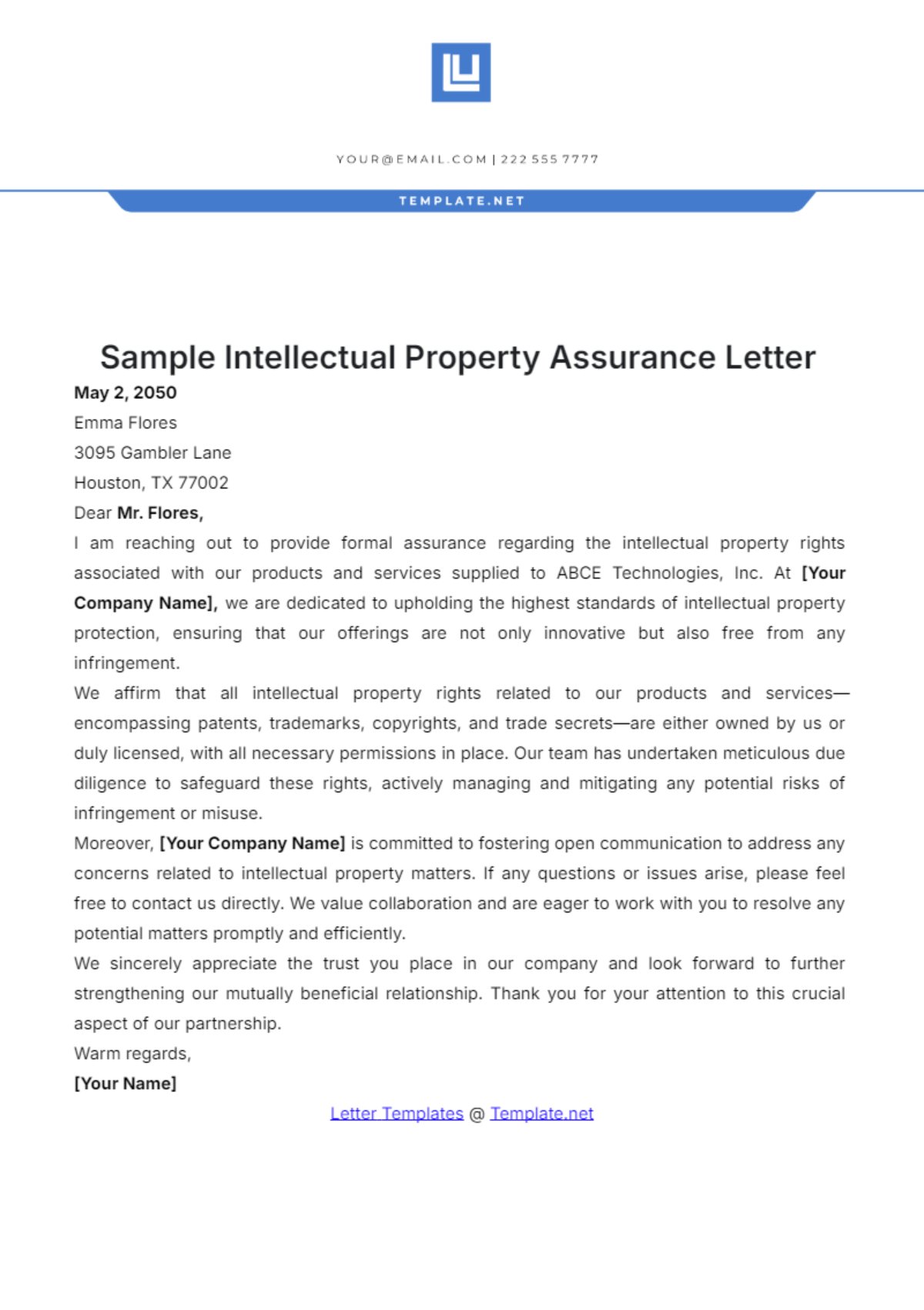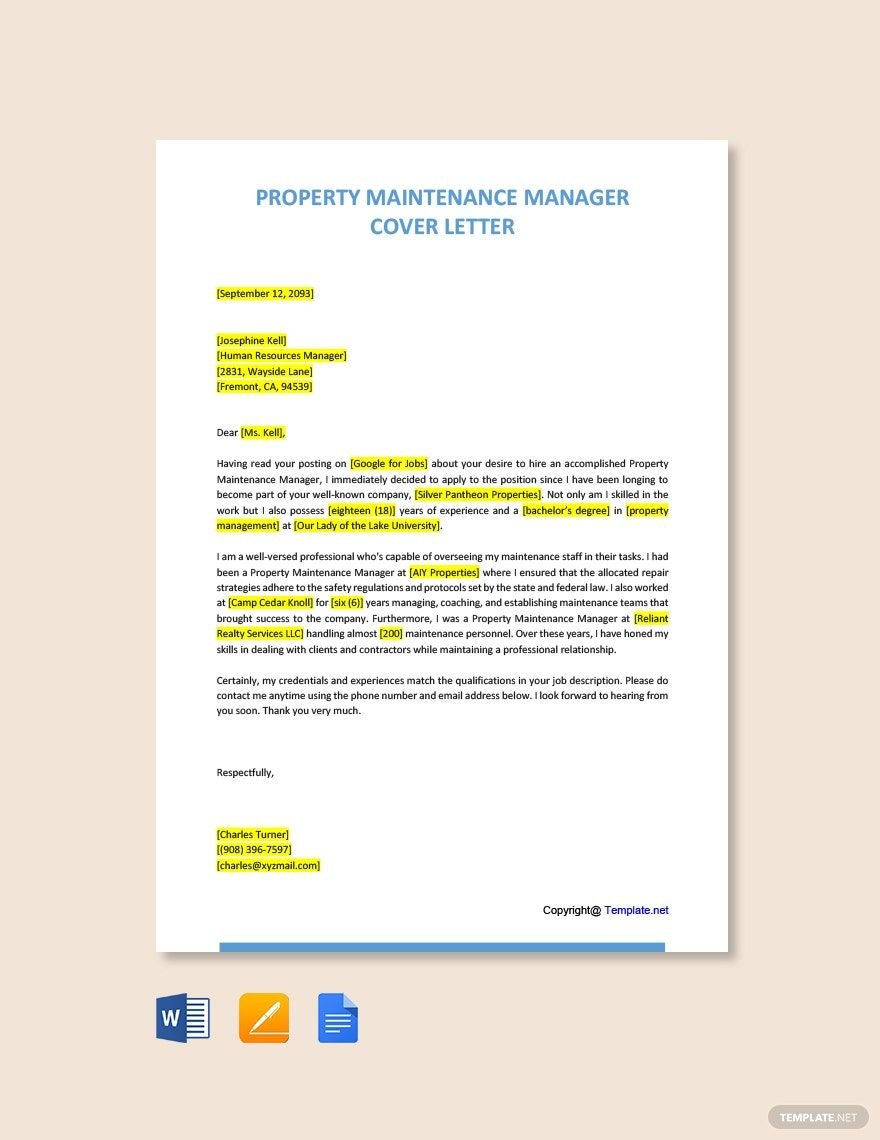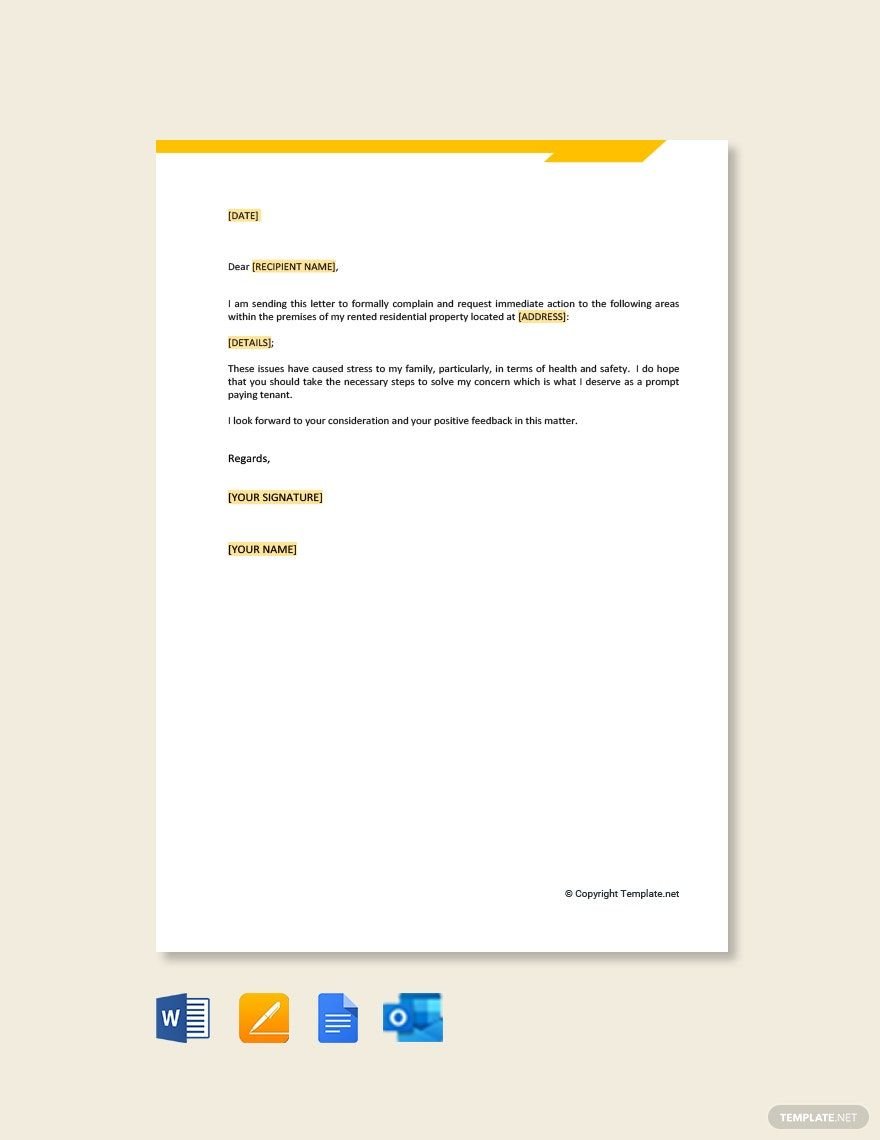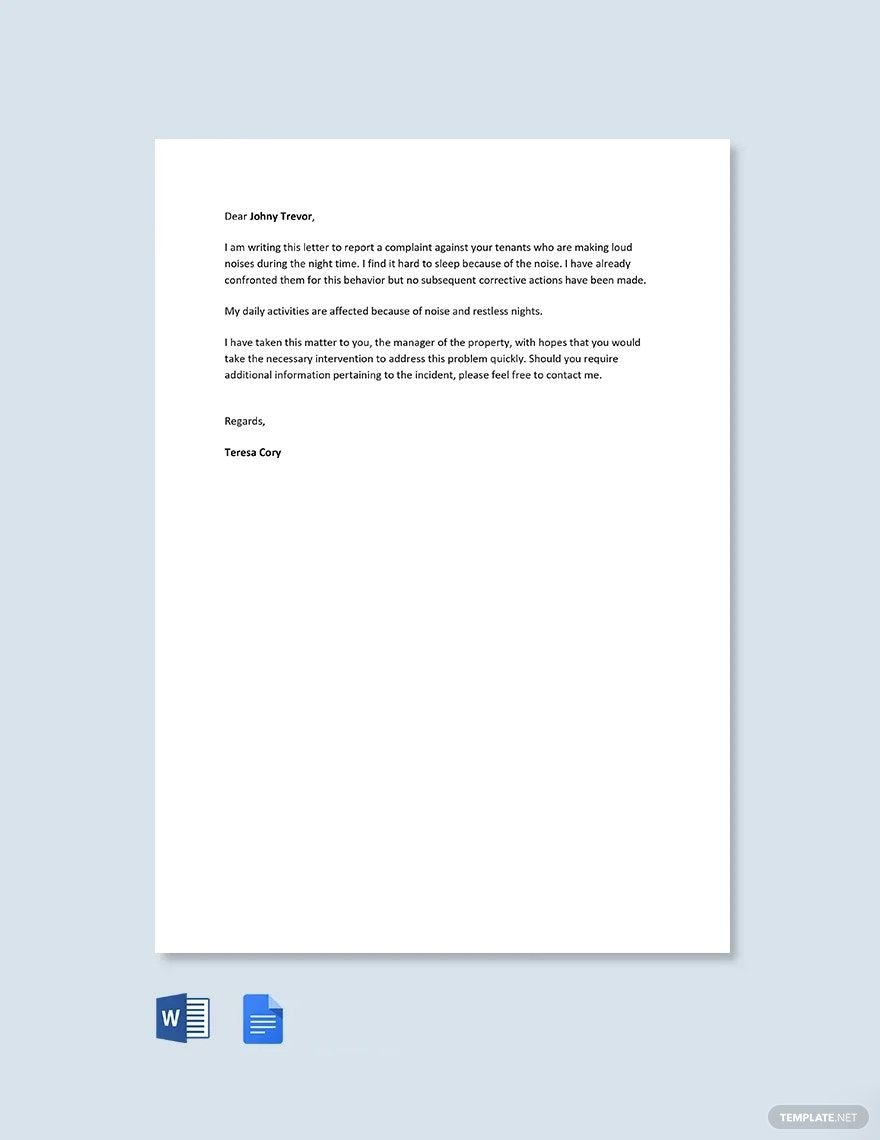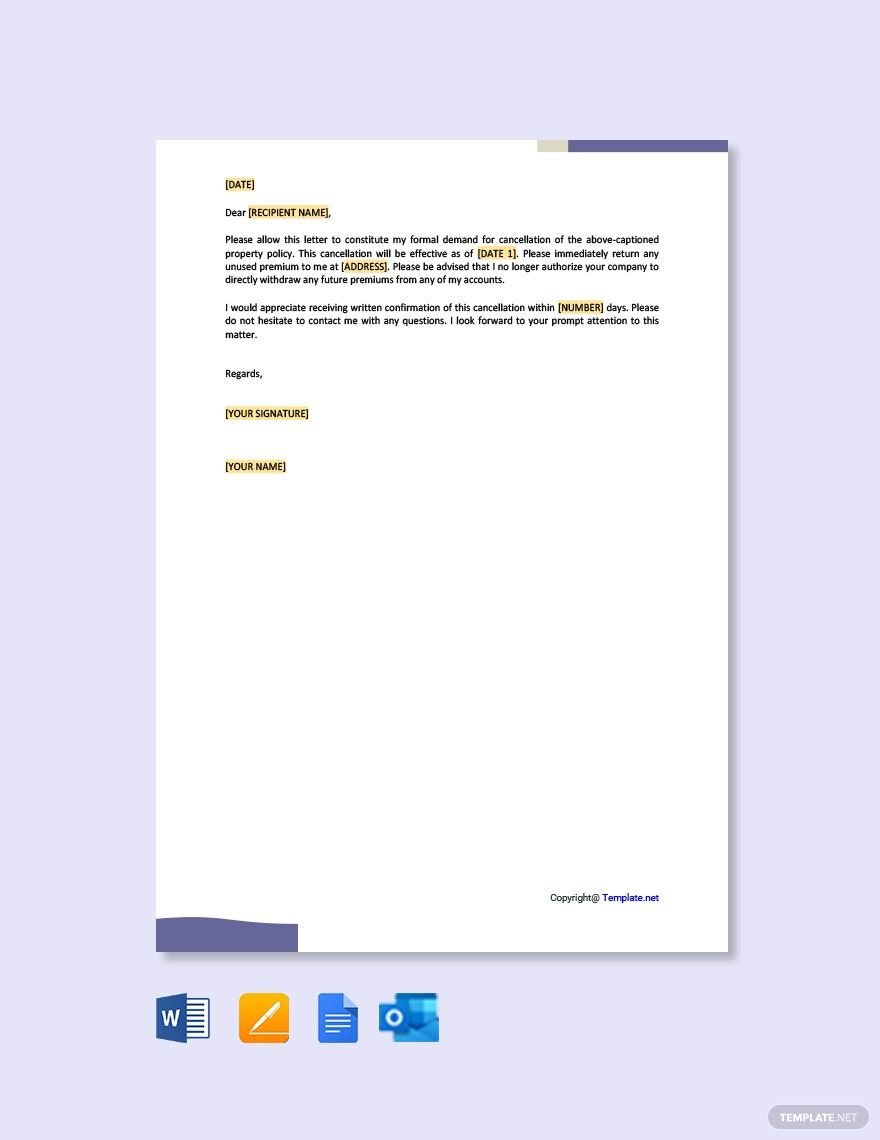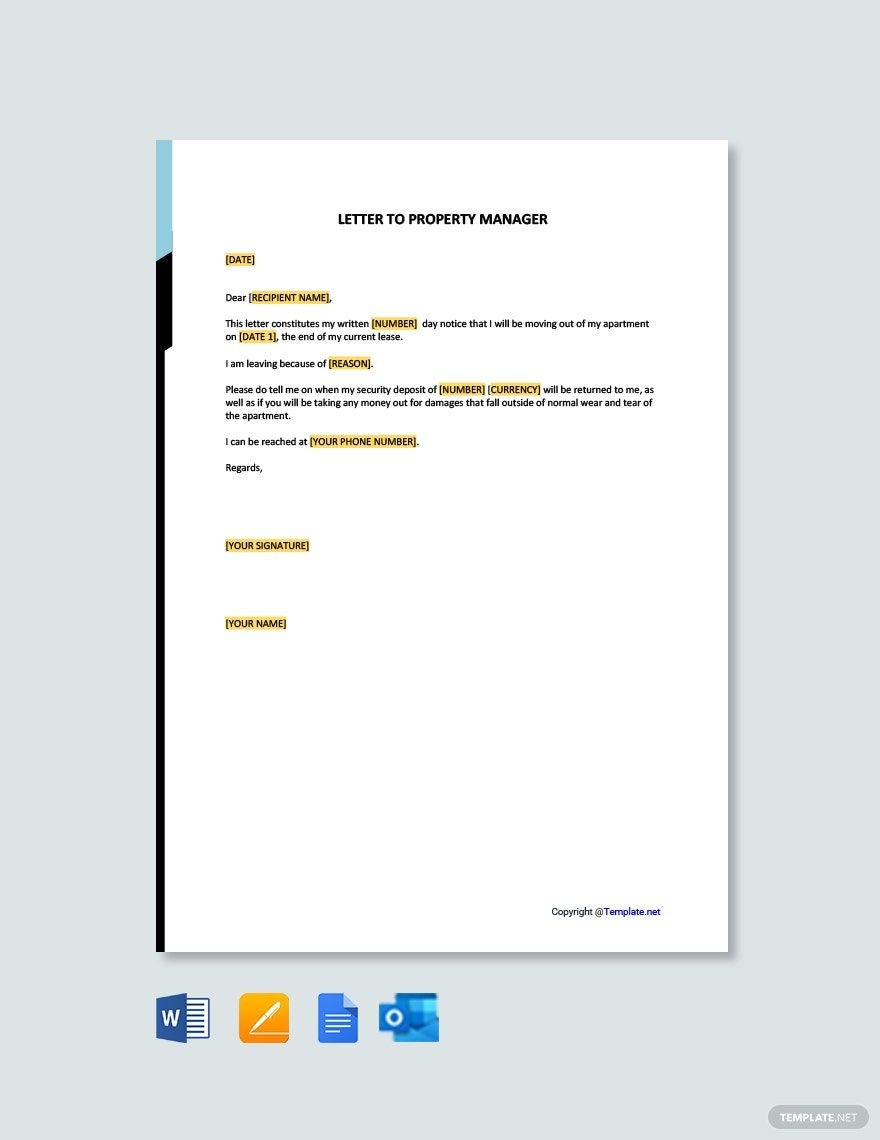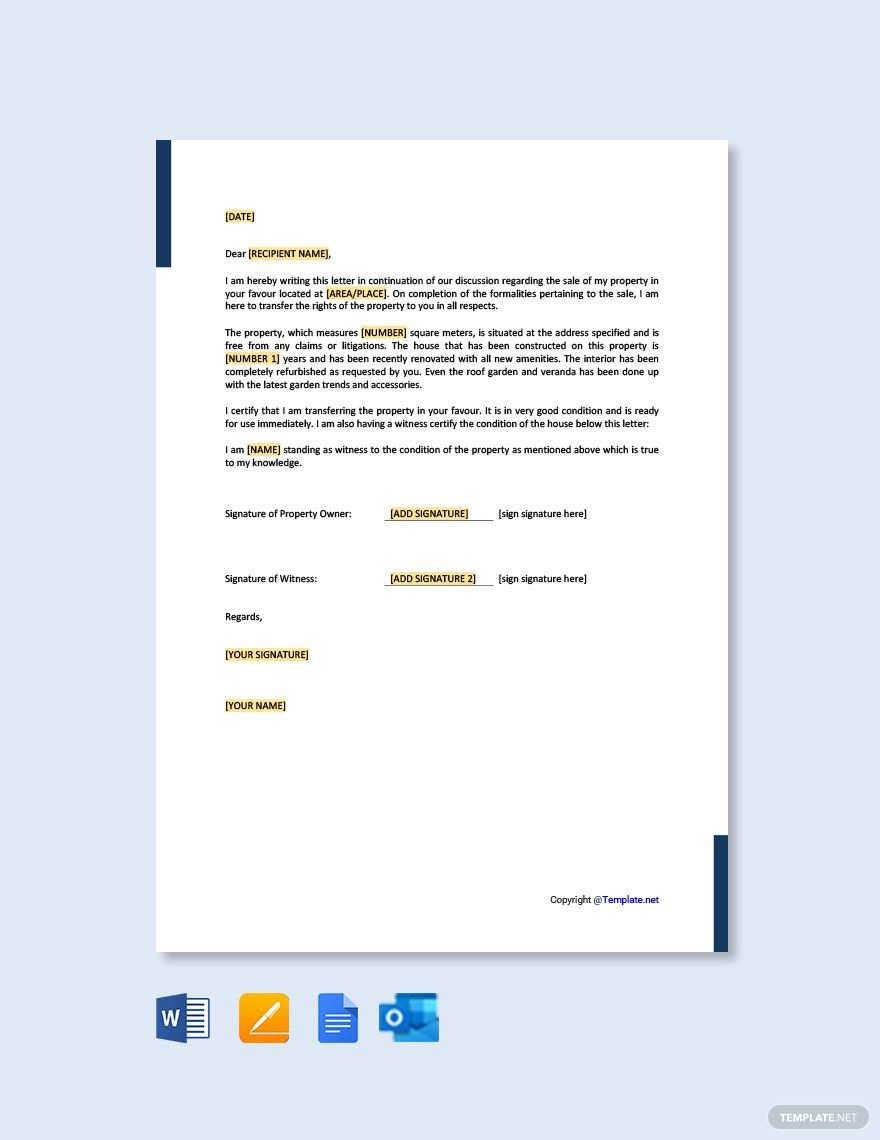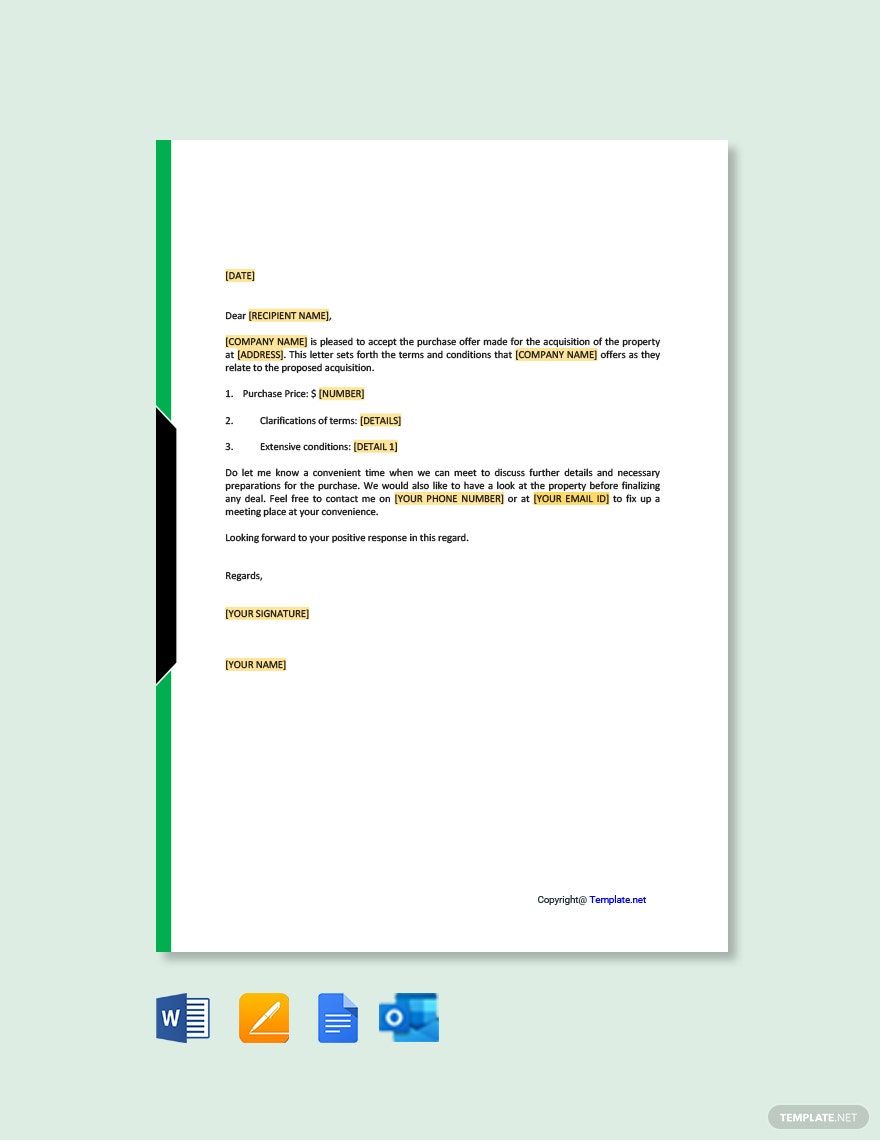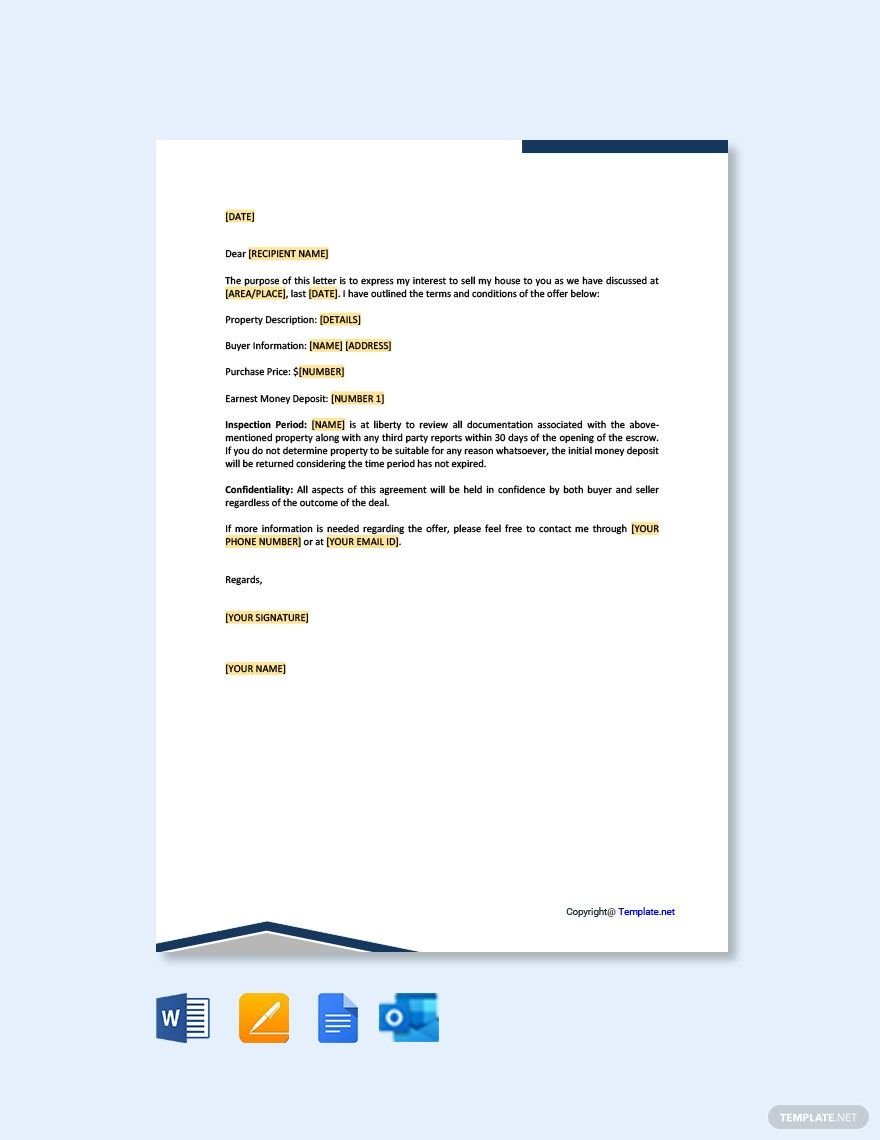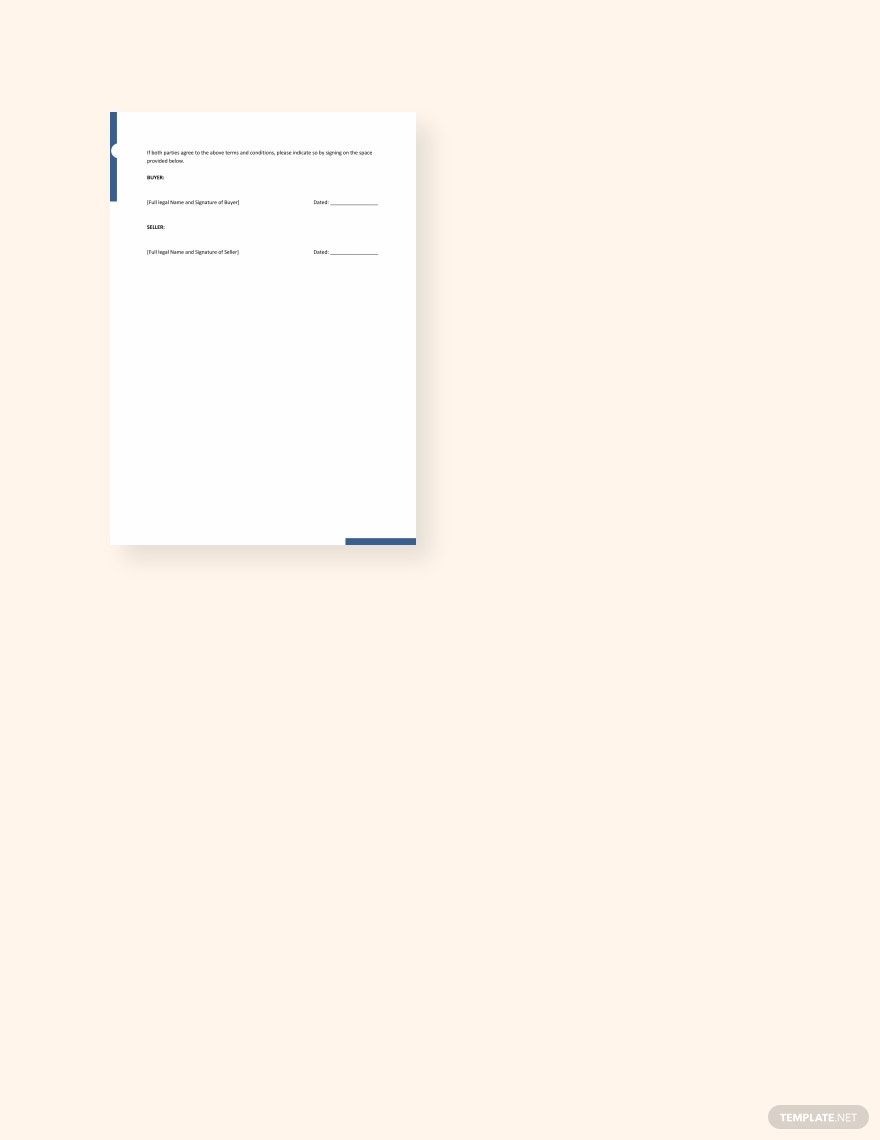Discover how to elevate your real estate communications with Property Letter Templates from Template.net.
Keep your real estate business efficient, professional, and engaging with Property Letter Templates from Template.net. Designed specifically for real estate agents, brokers, and property managers, these templates allow you to easily draft standout letters that capture the attention of potential clients. Utilize these templates to seamlessly promote a new listing or to nurture ongoing relationships with personalized follow-ups. Our templates include essential details such as property addresses, key selling points, and contact information. With no design expertise required, you can create professional-grade letters quickly, saving you valuable time while maintaining a polished image. Additionally, these templates are perfect for both digital and print distribution, ensuring you can reach your audience wherever they are.
Discover the many Property Letter Templates we have on hand to suit every real estate occasion. Choose from a variety of professionally-designed templates, effortlessly replacing placeholders with your property photos and agent details. Enhance your letters by adjusting colors and fonts to align with your brand's identity seamlessly. Our templates support advanced touches like dragging-and-dropping icons, adding custom graphics, and even incorporating animated effects for digital communications. The possibilities are endless and completely skill-free, allowing you to stay focused on closing deals. Stay ahead of the competition as we regularly update our library with fresh new designs. When you’re finished, you can easily download your letter for print or share it via link, email, or export, allowing you to reach your audience across multiple channels and ensuring a highly professional presentation.
